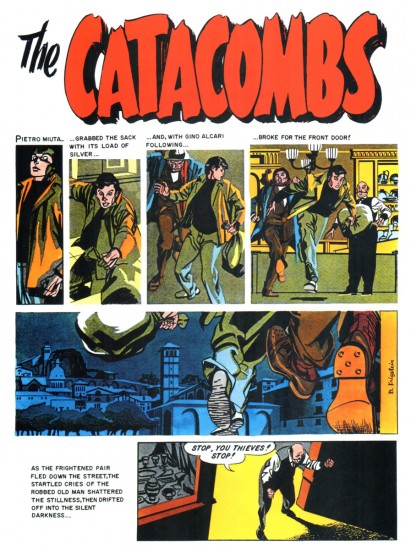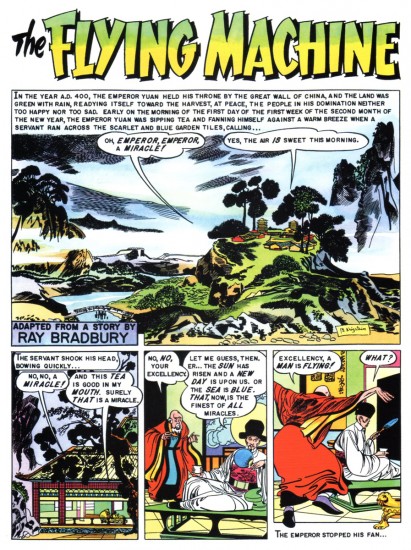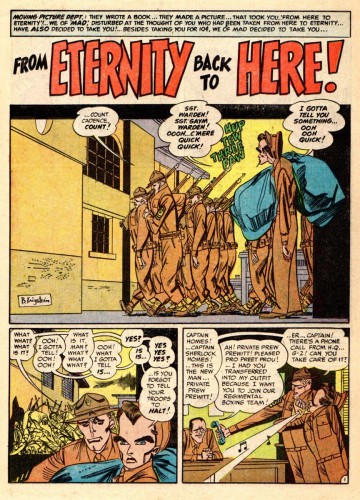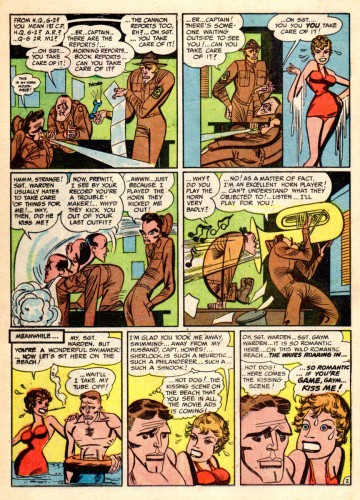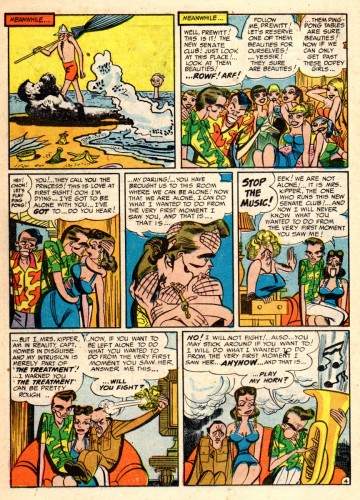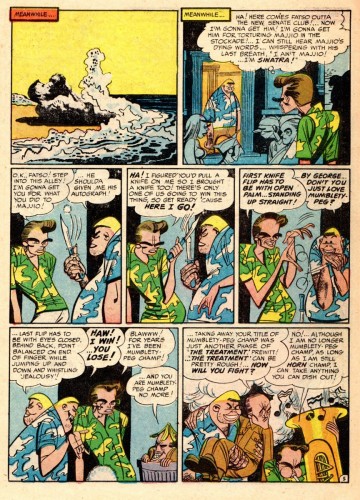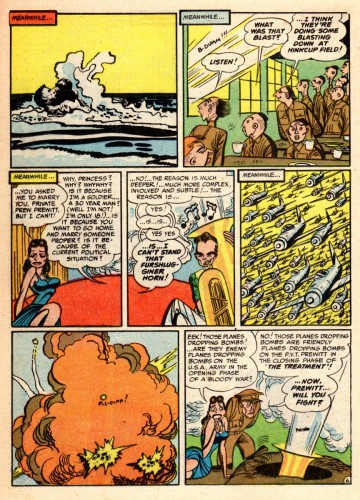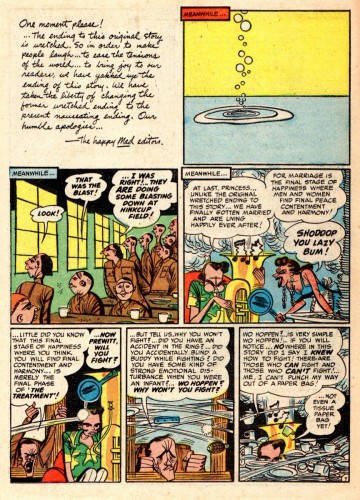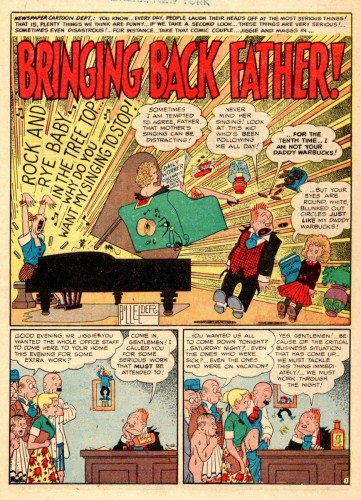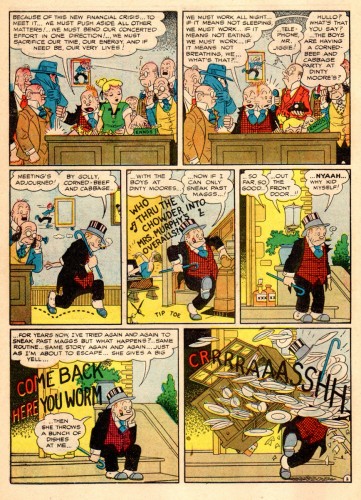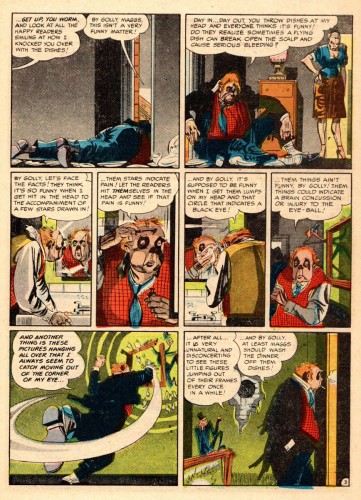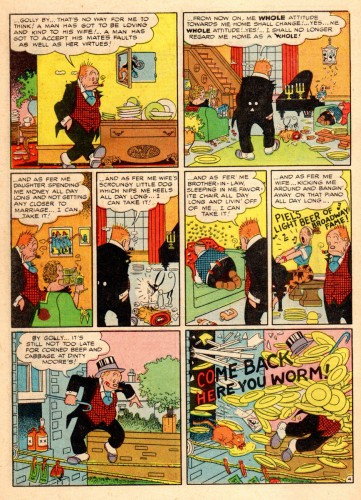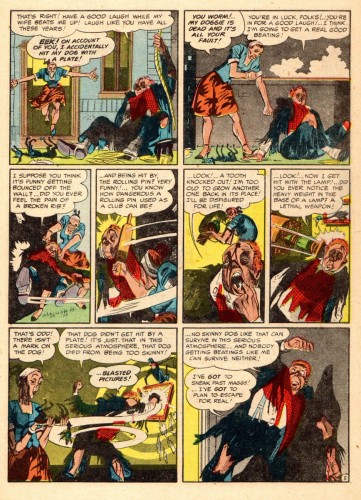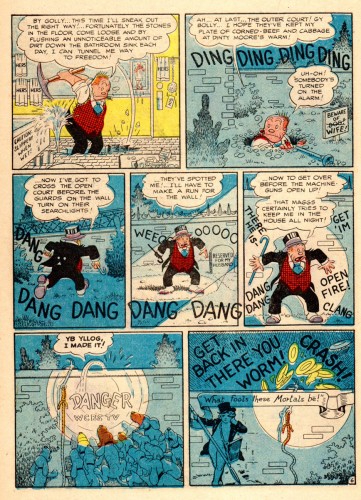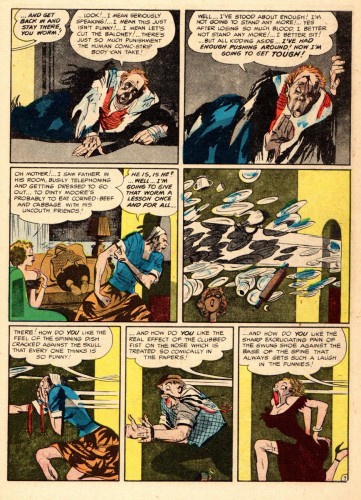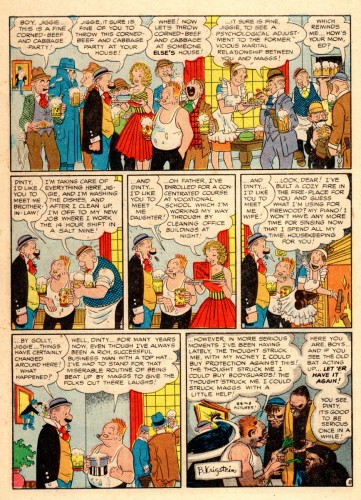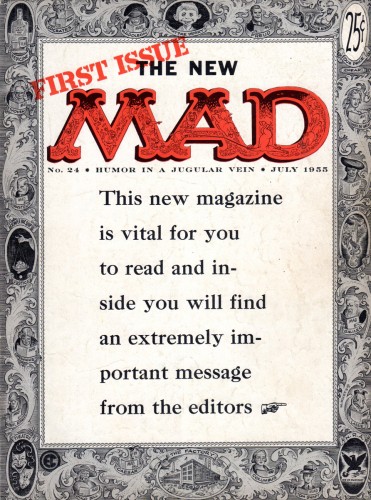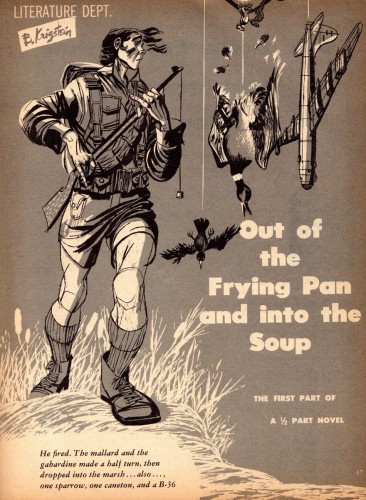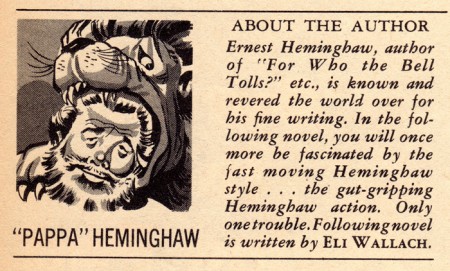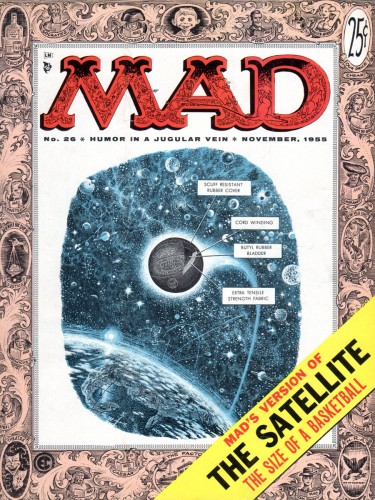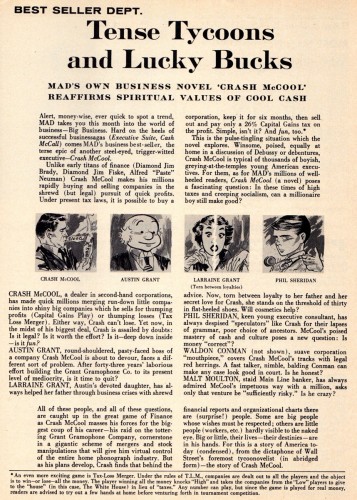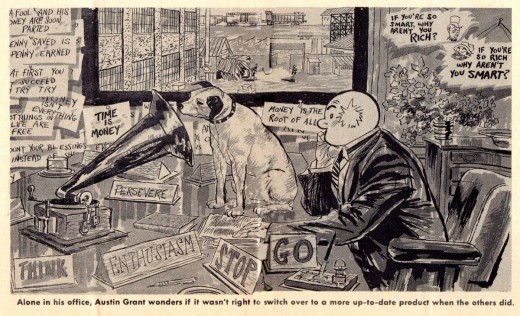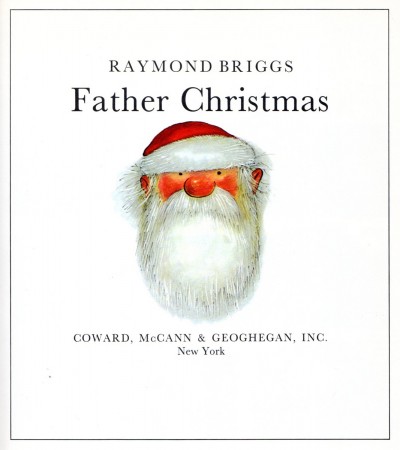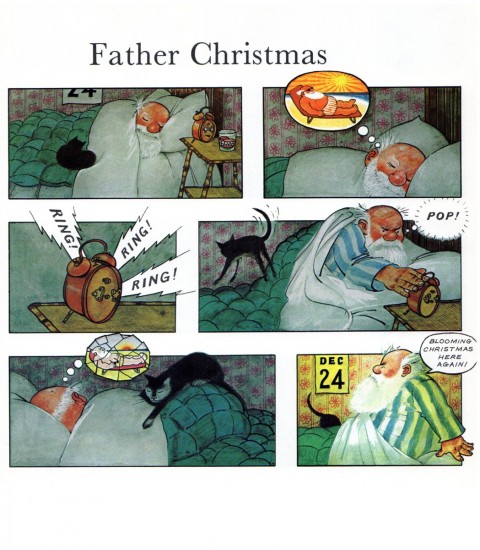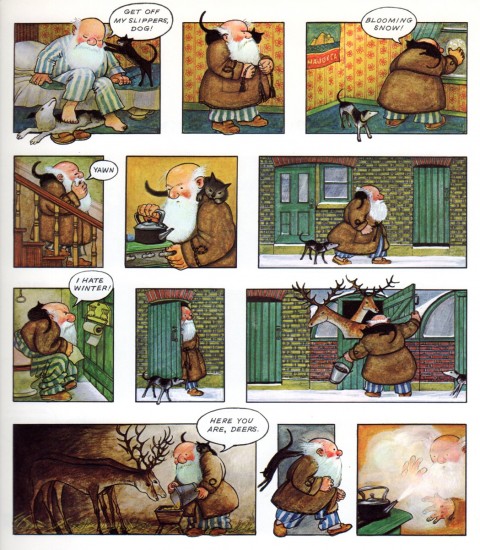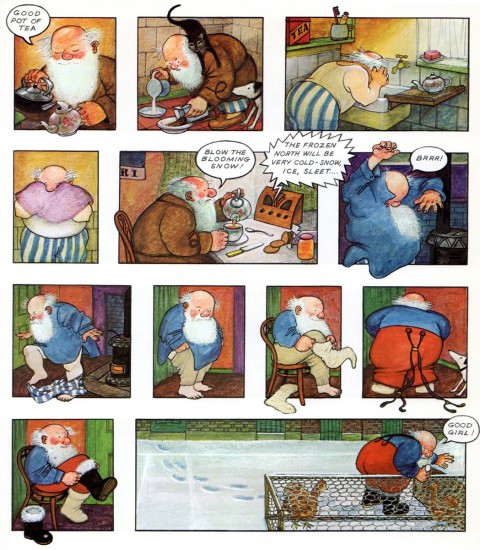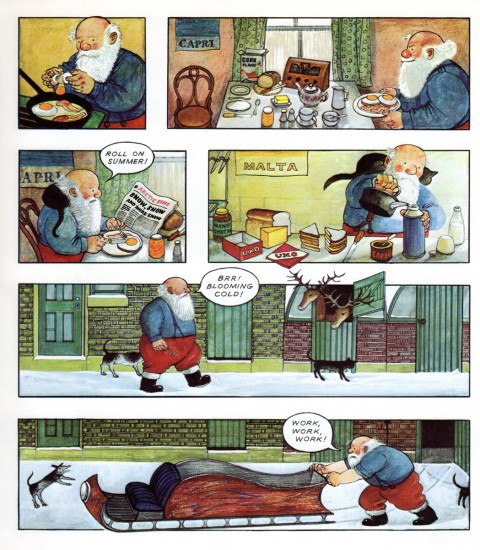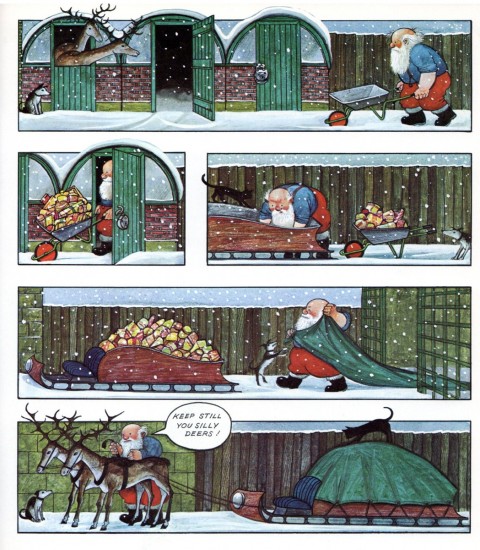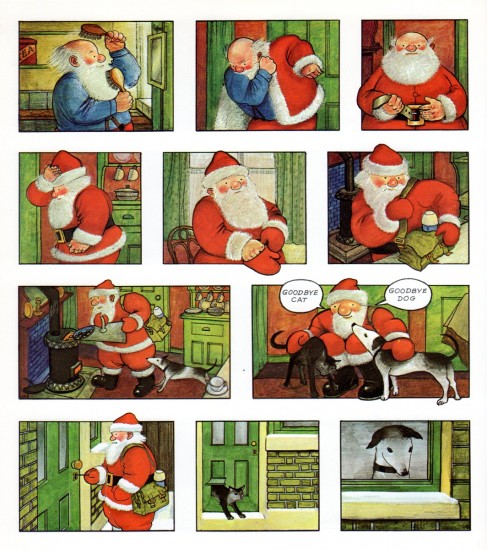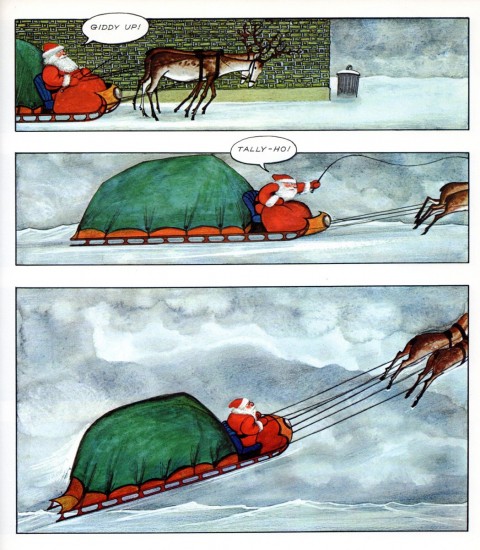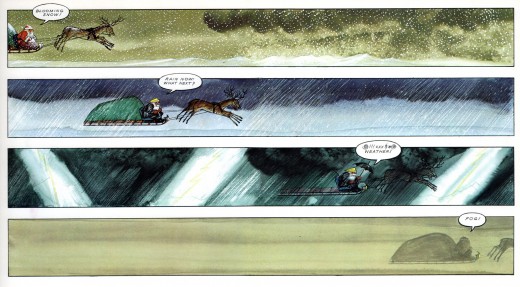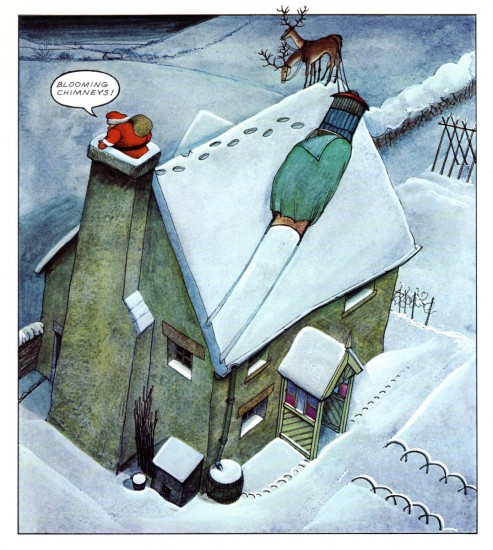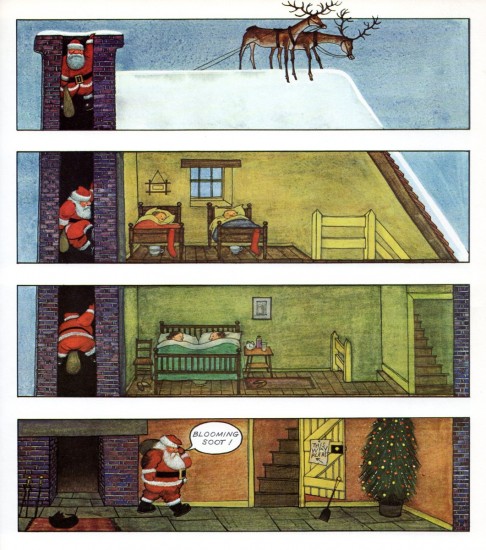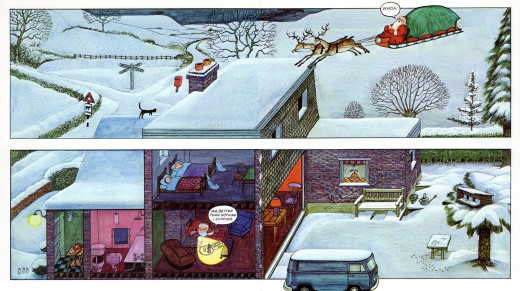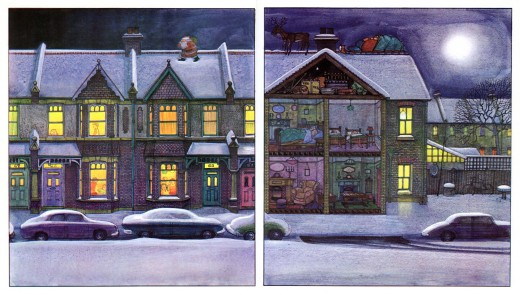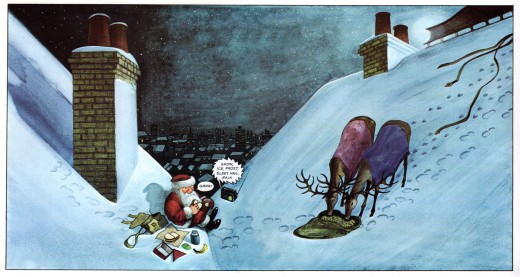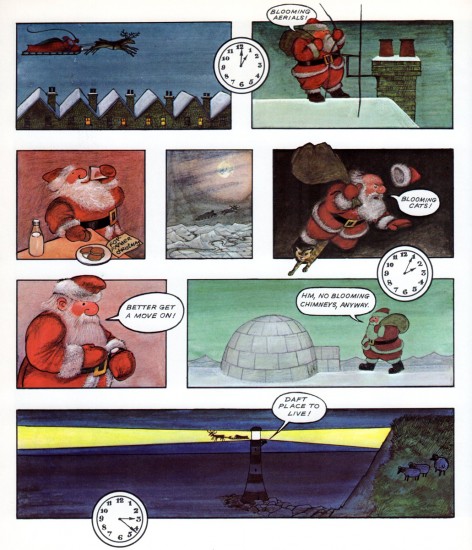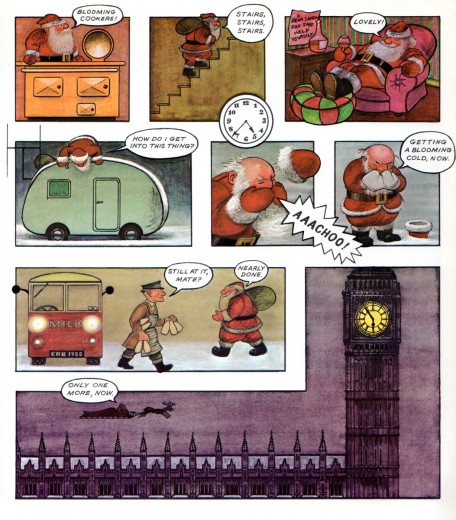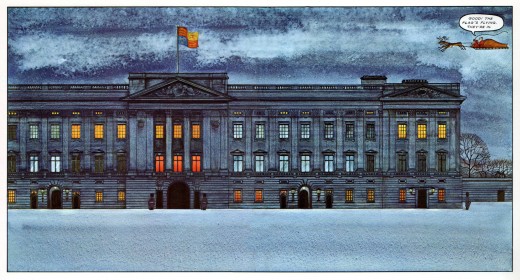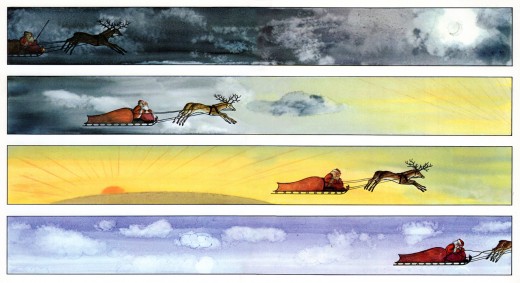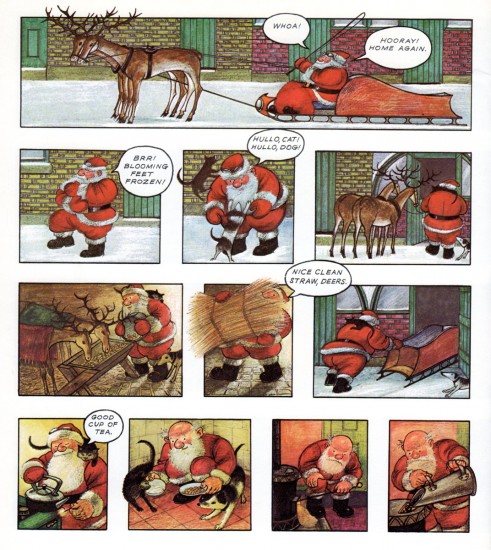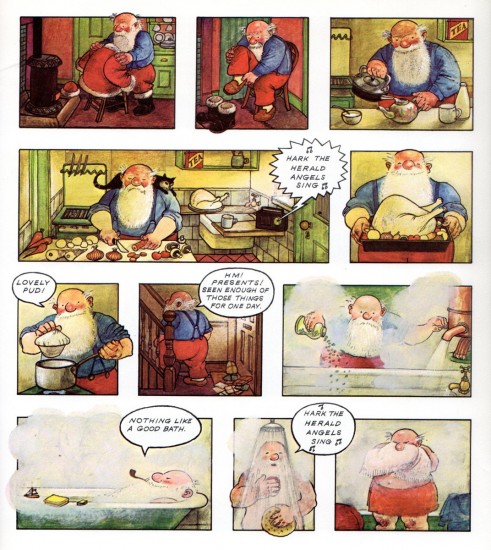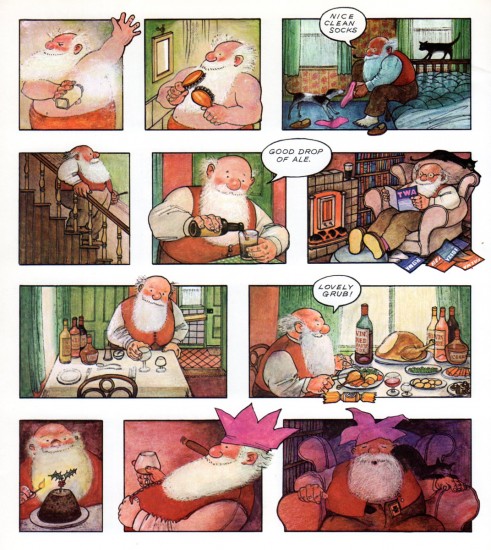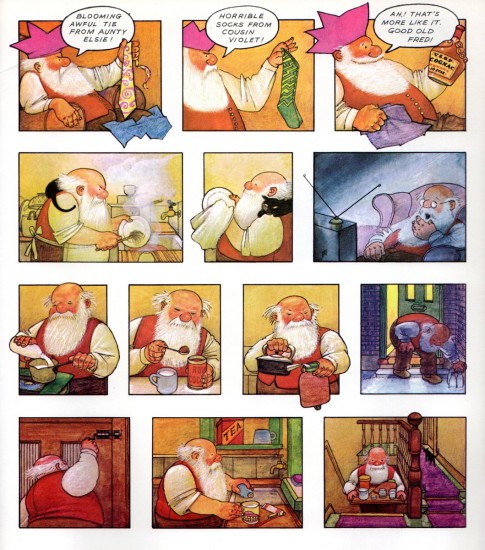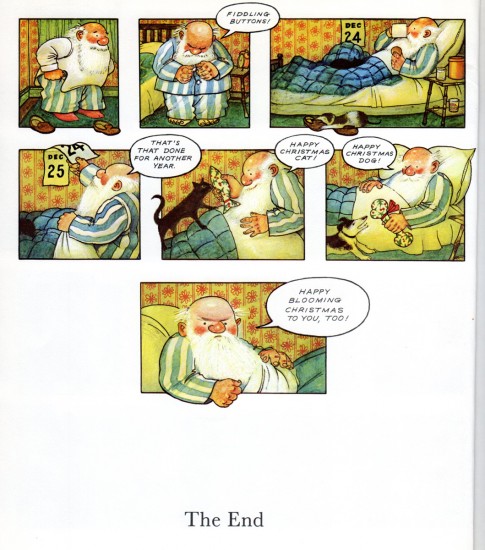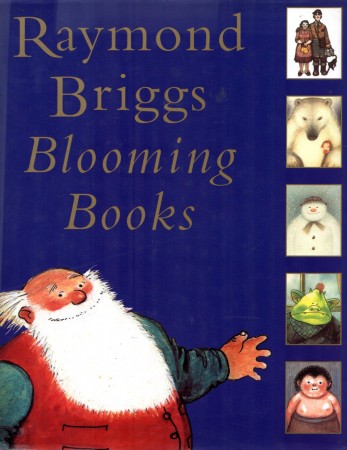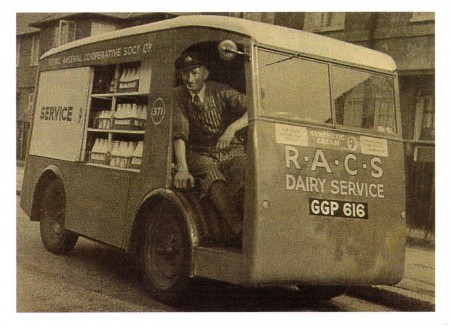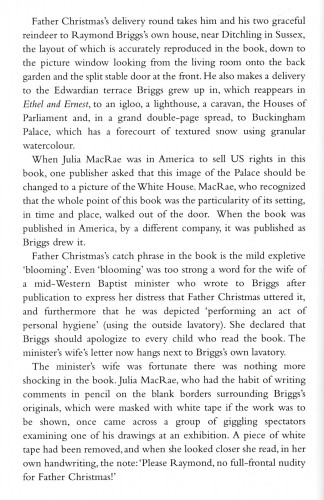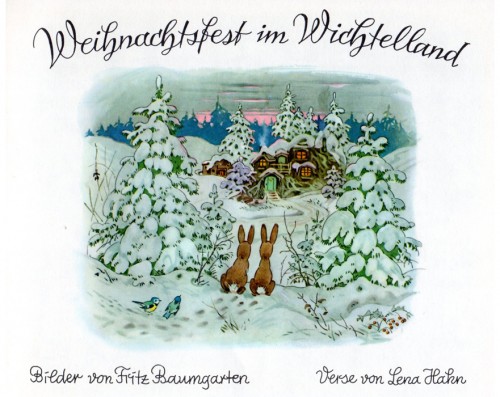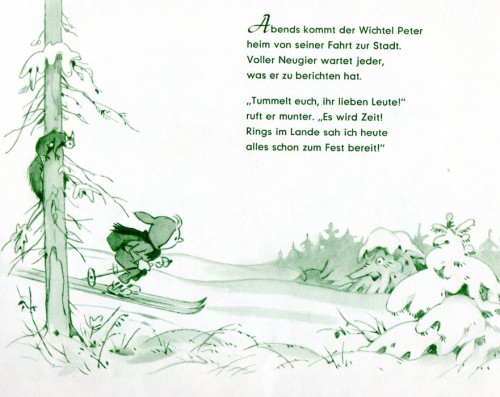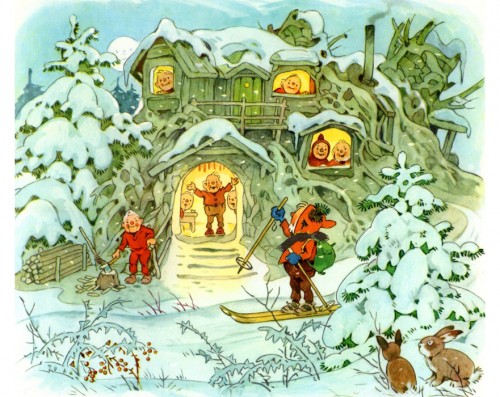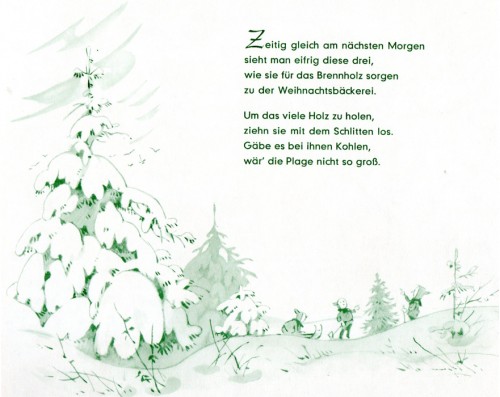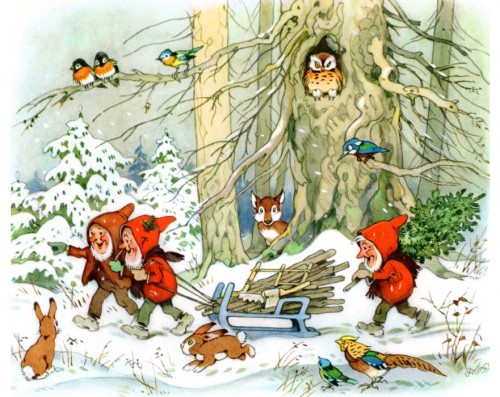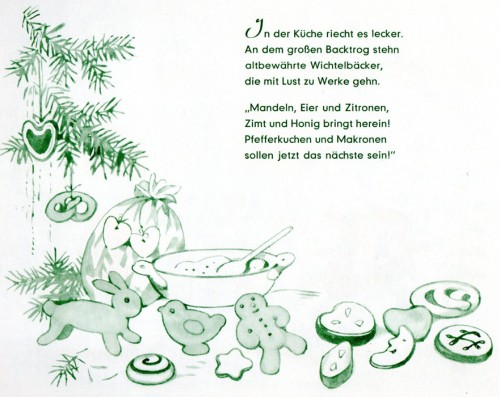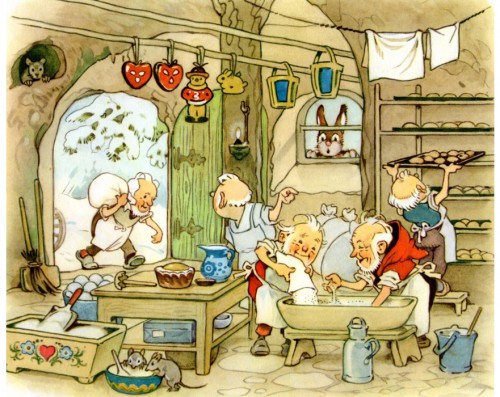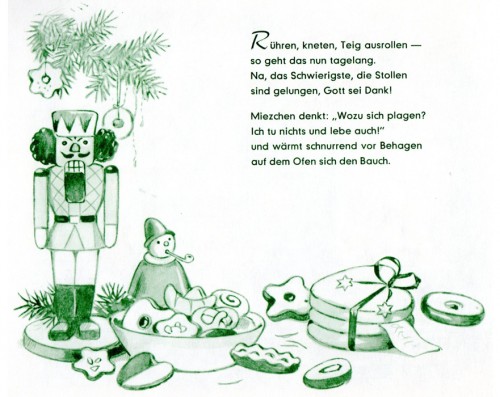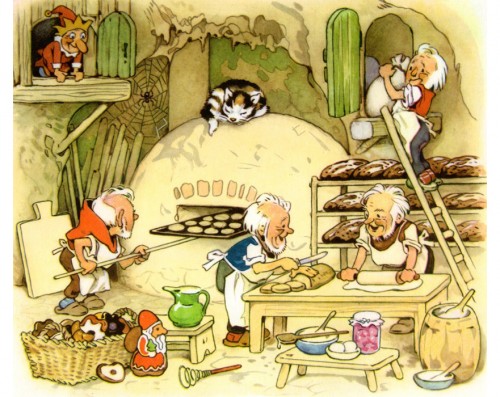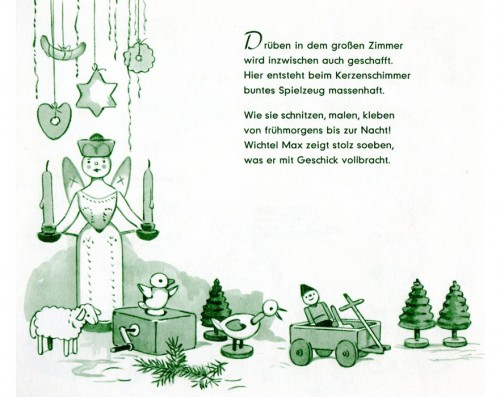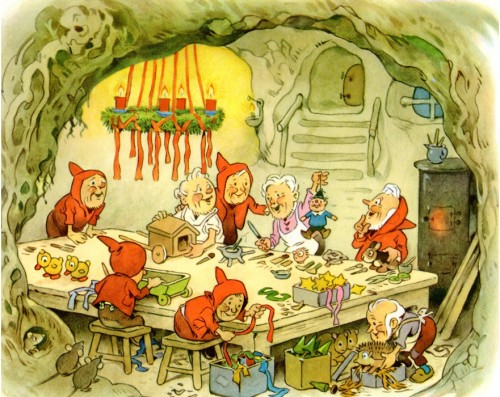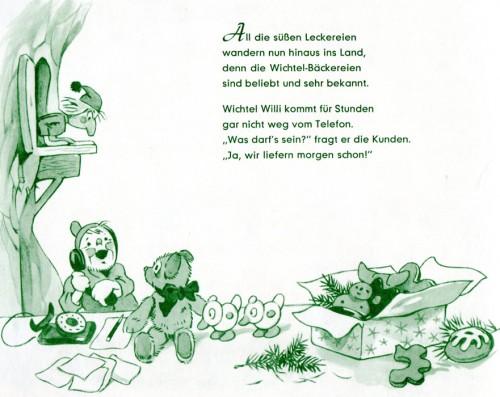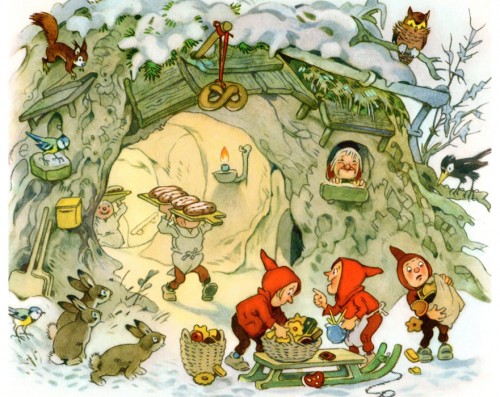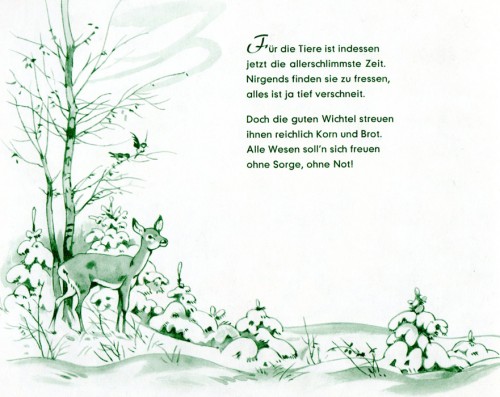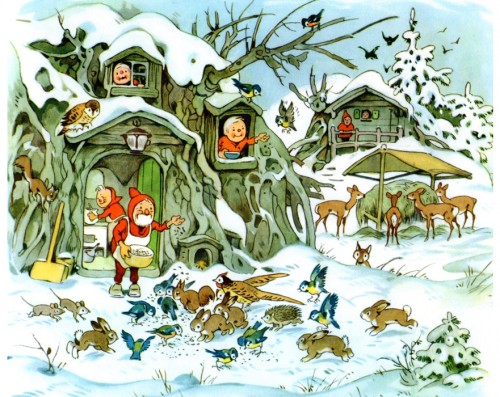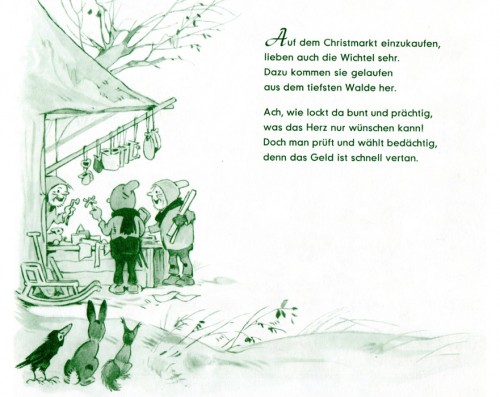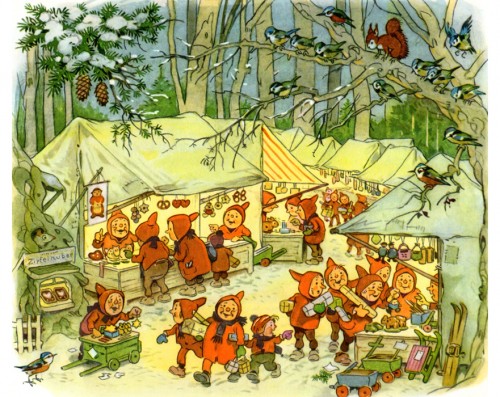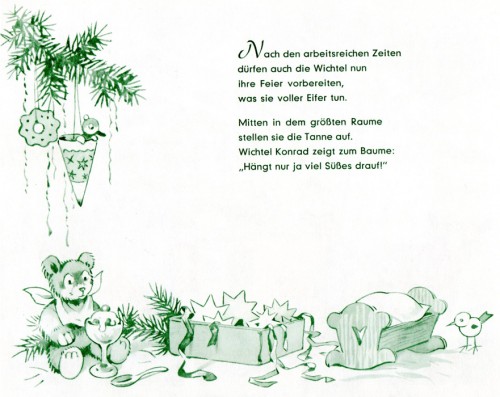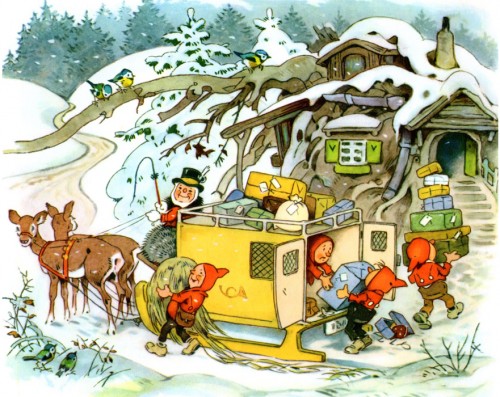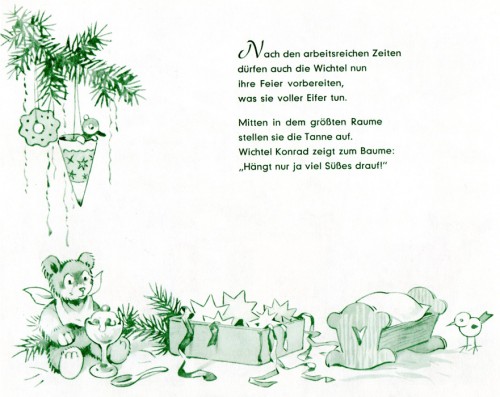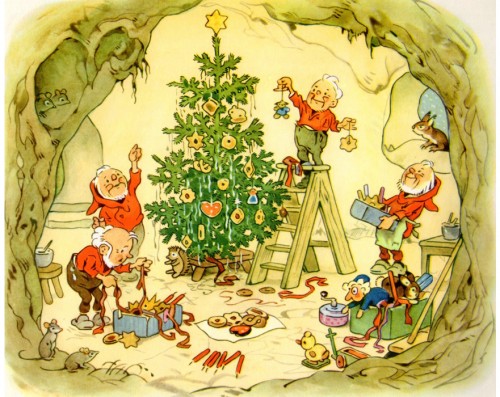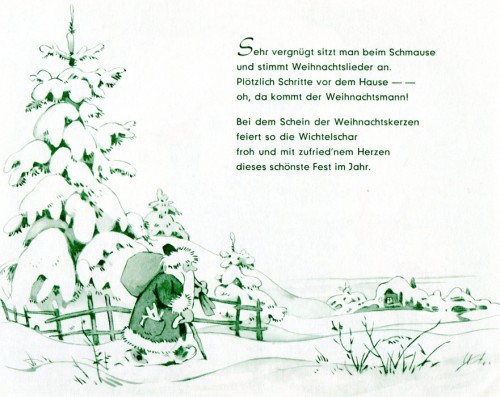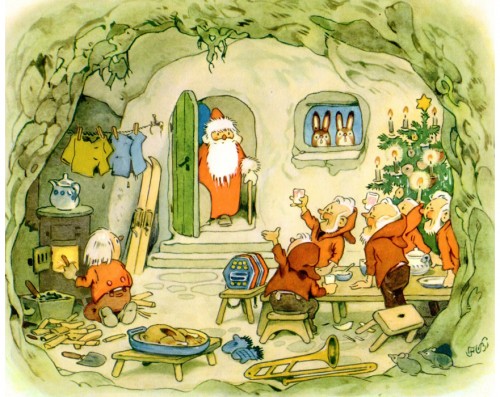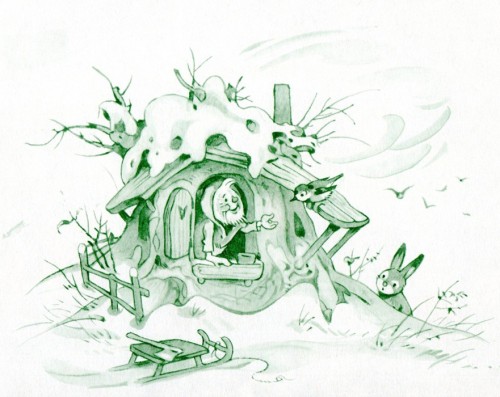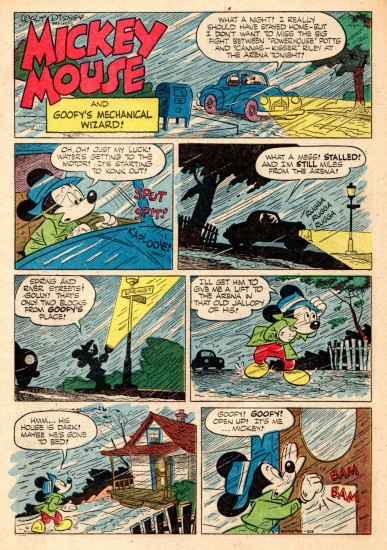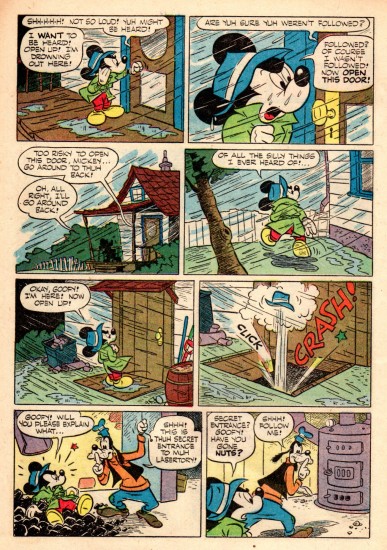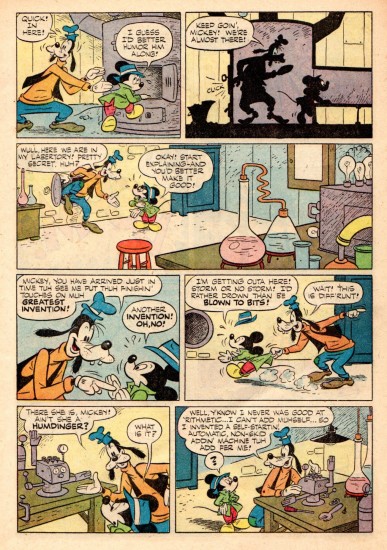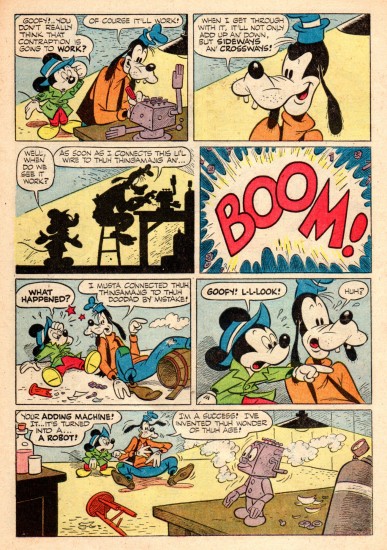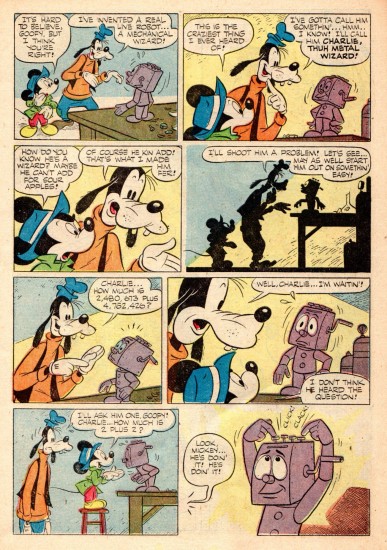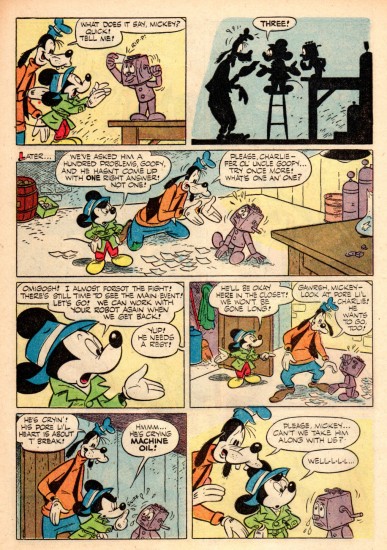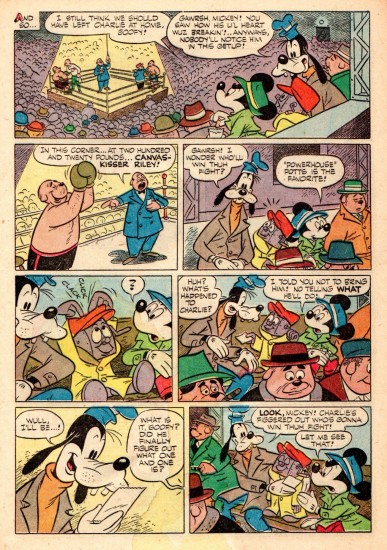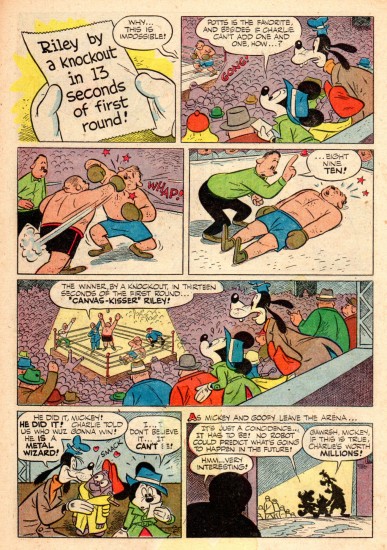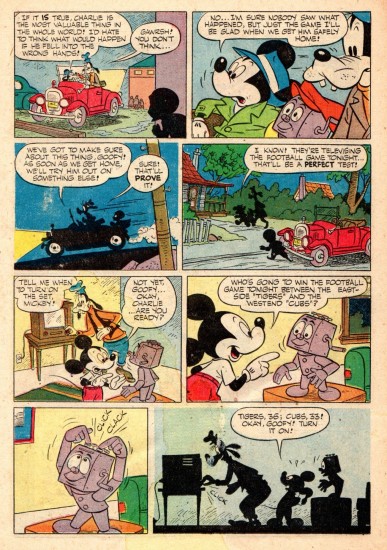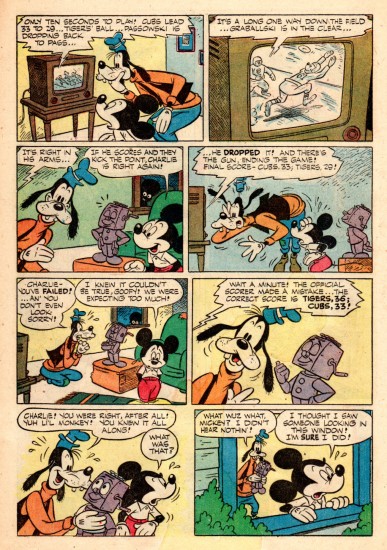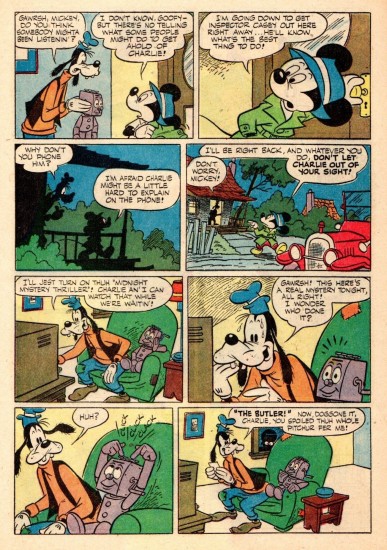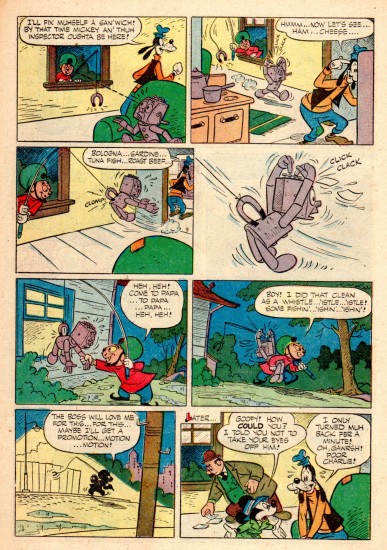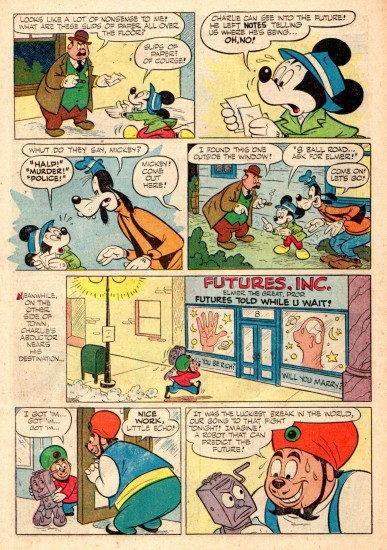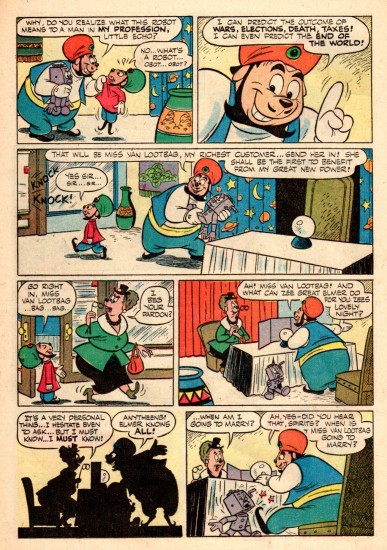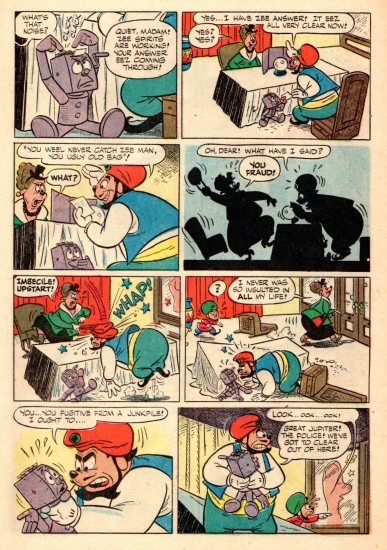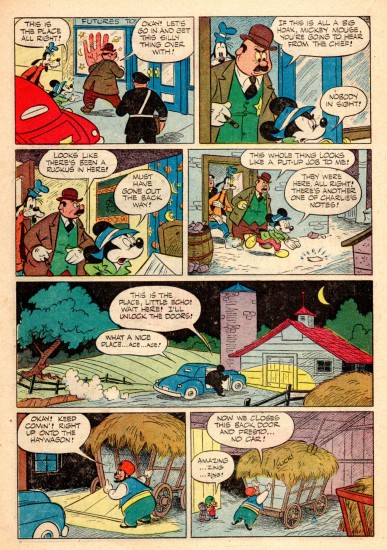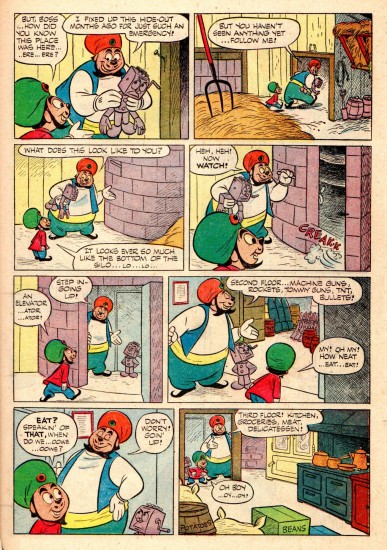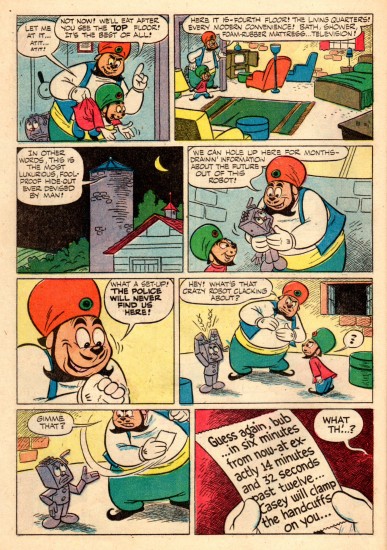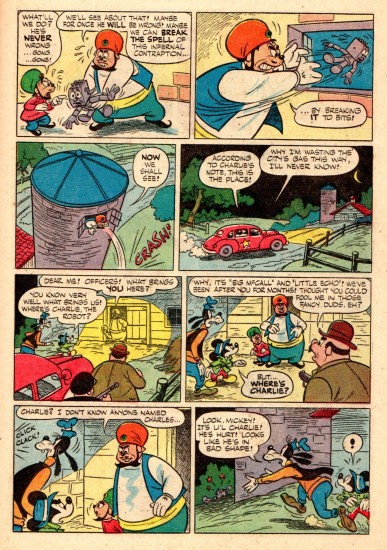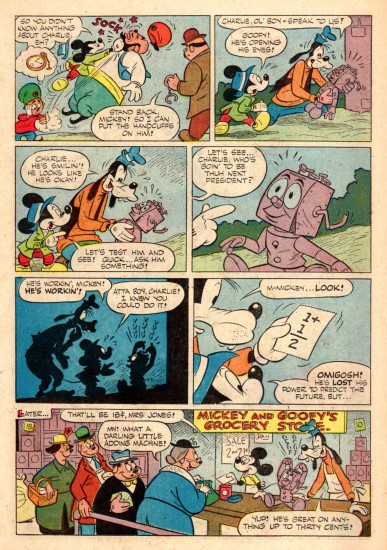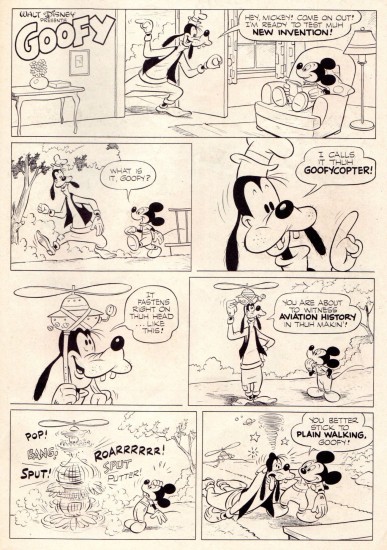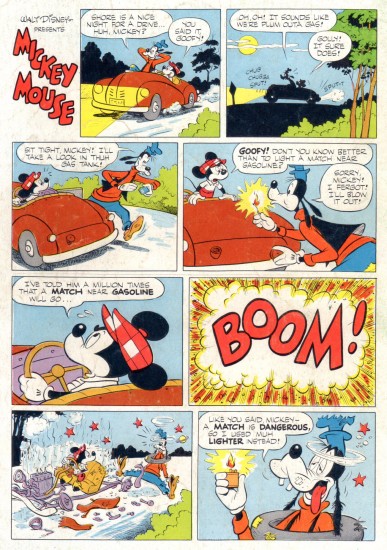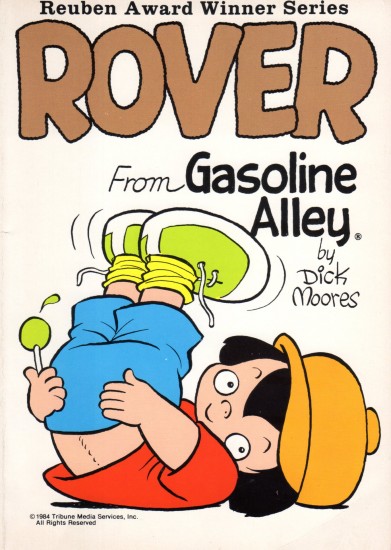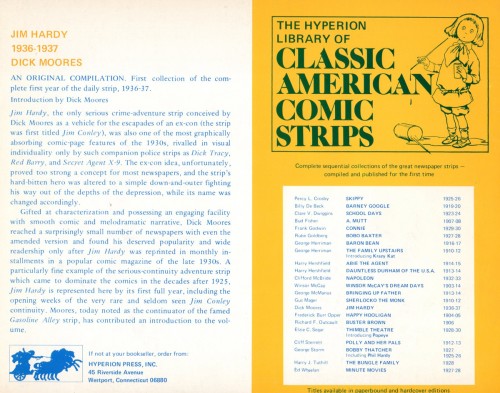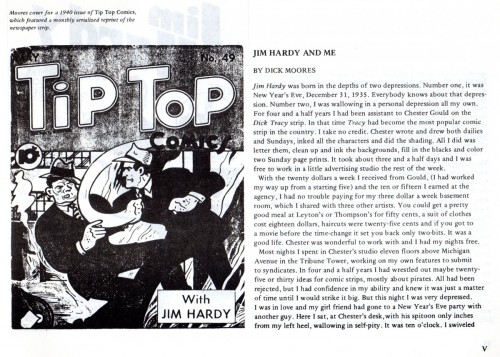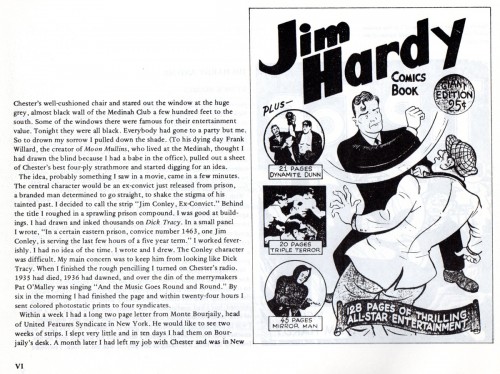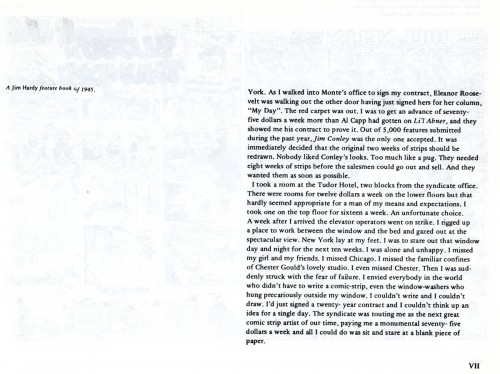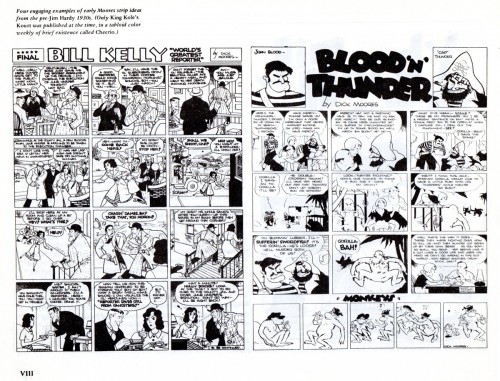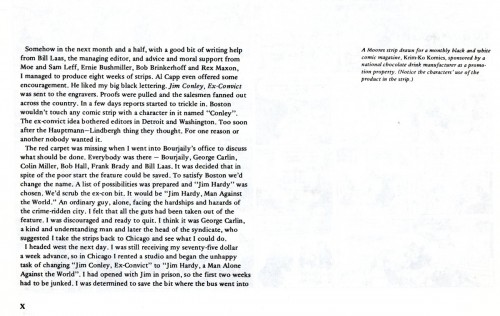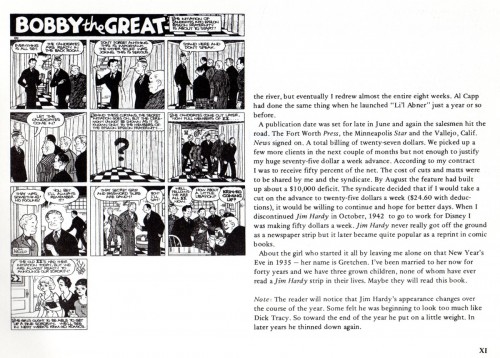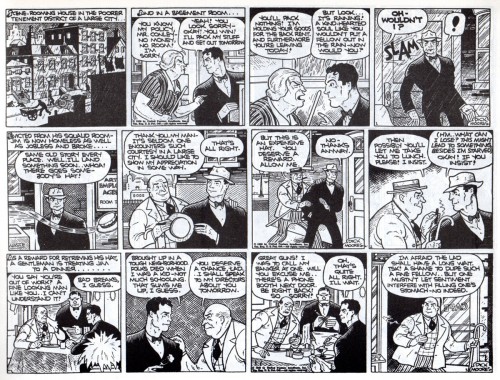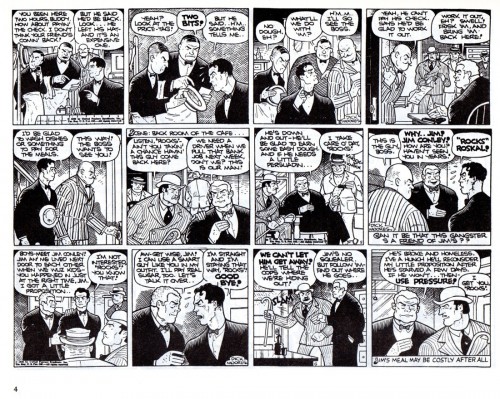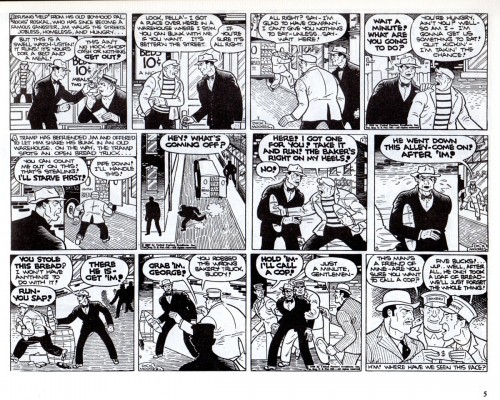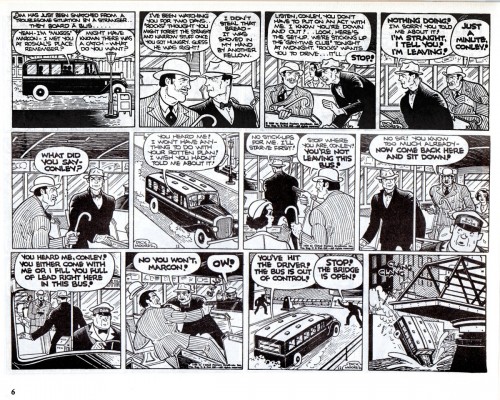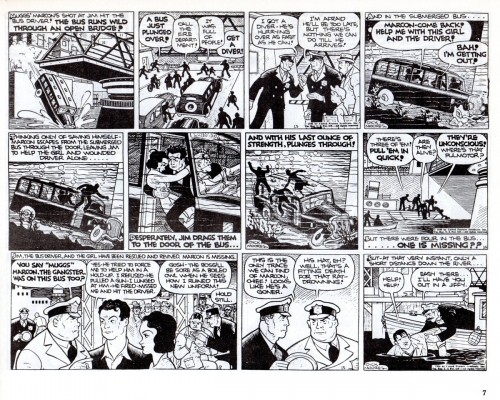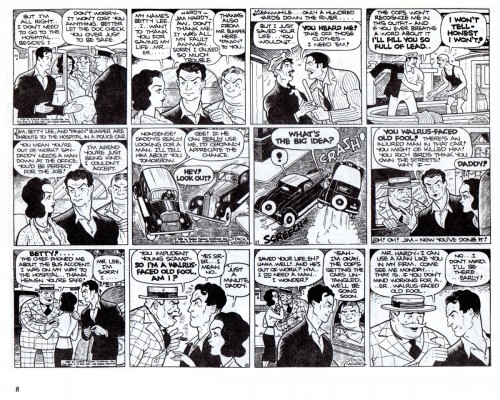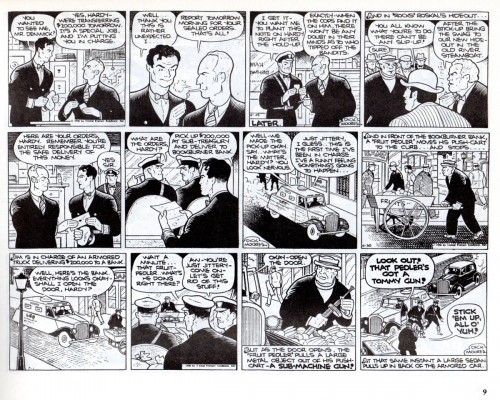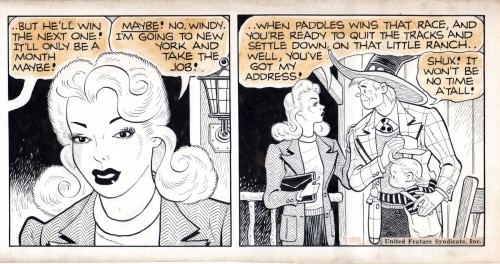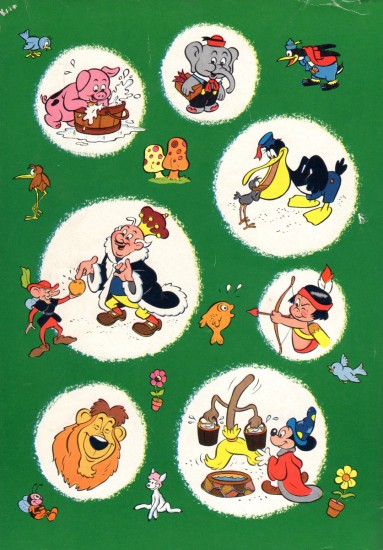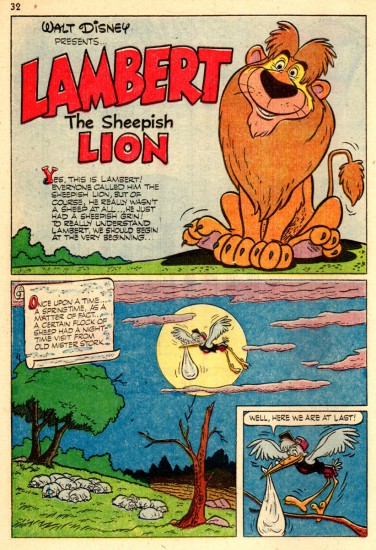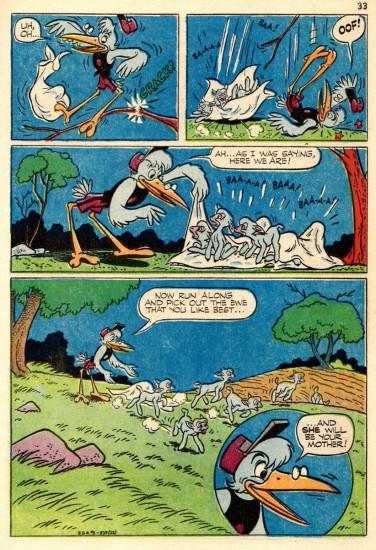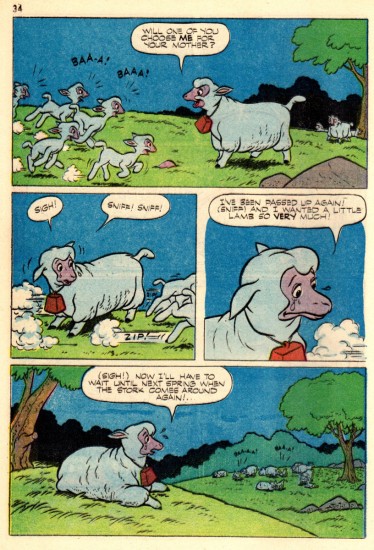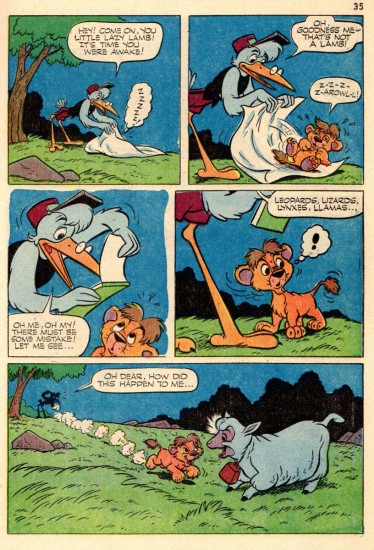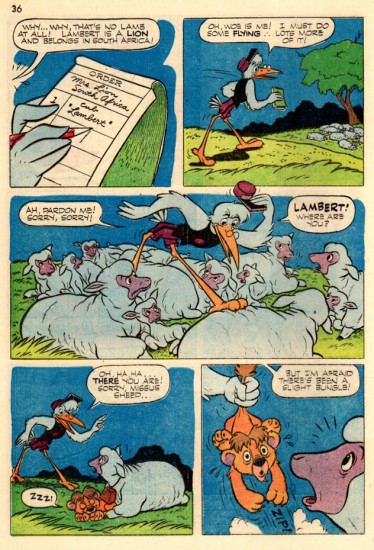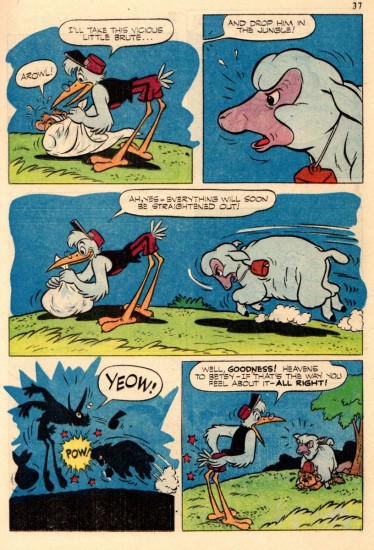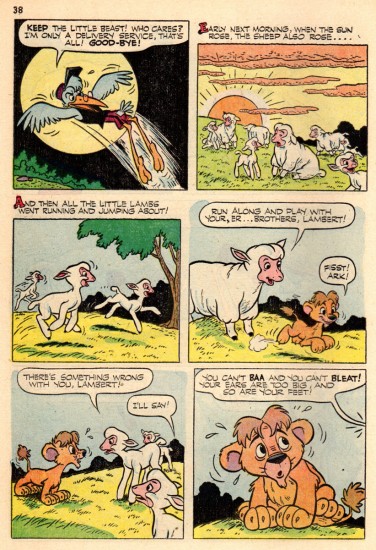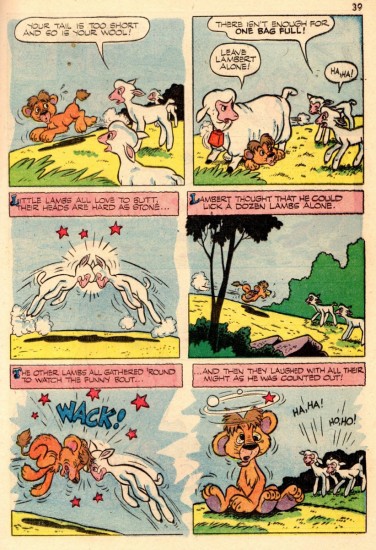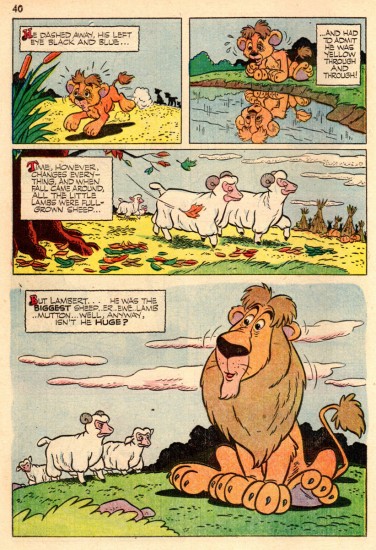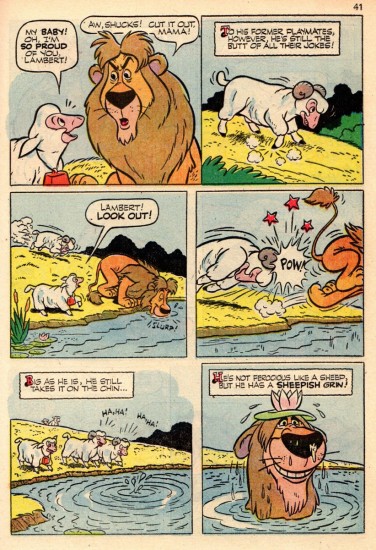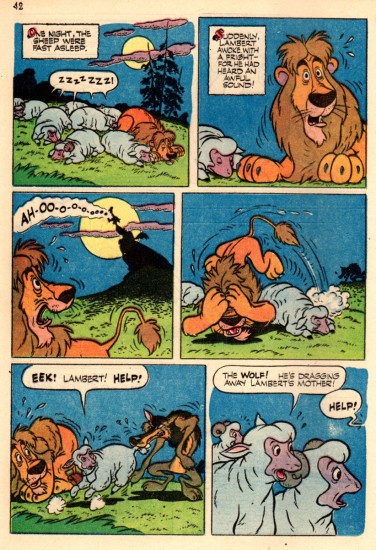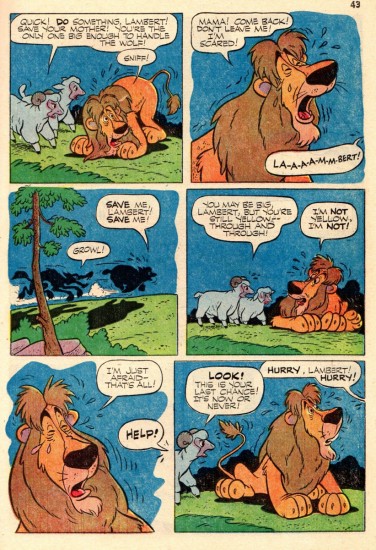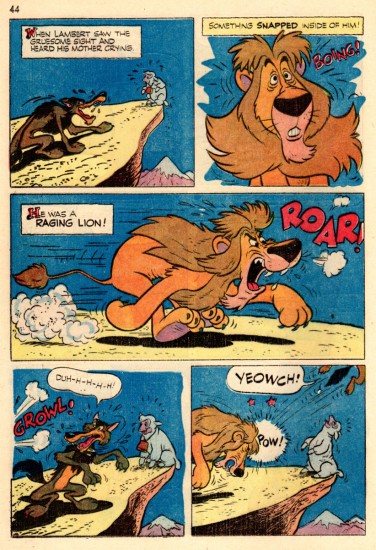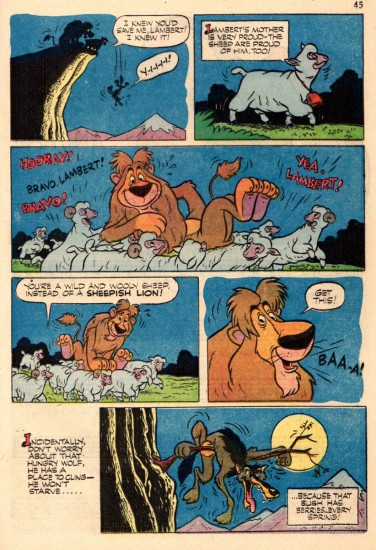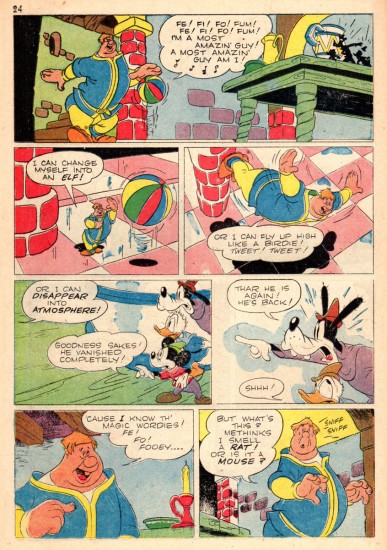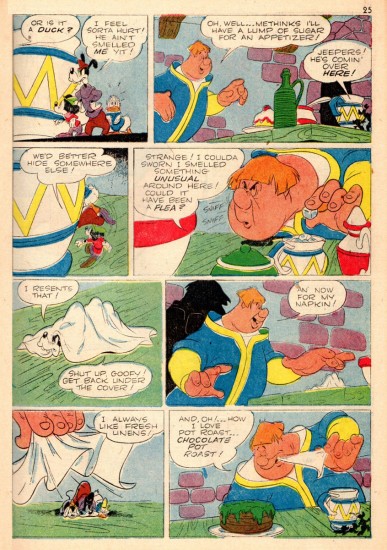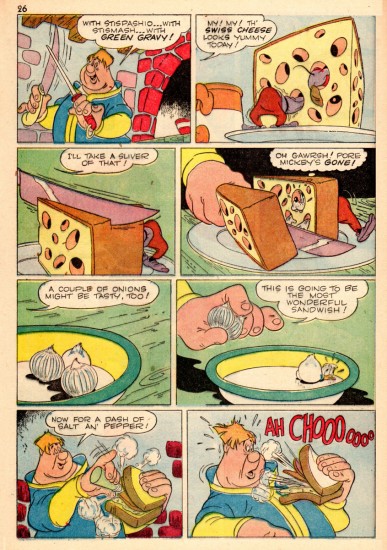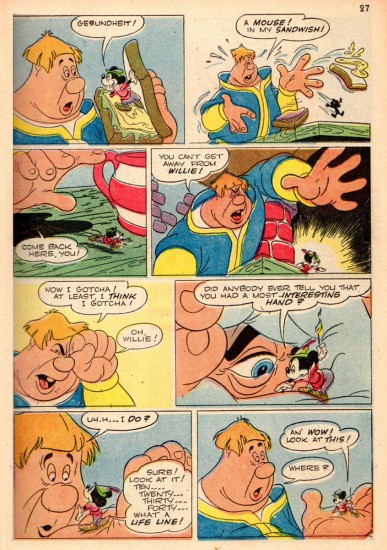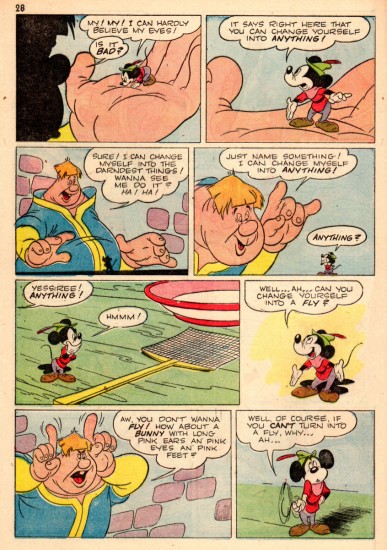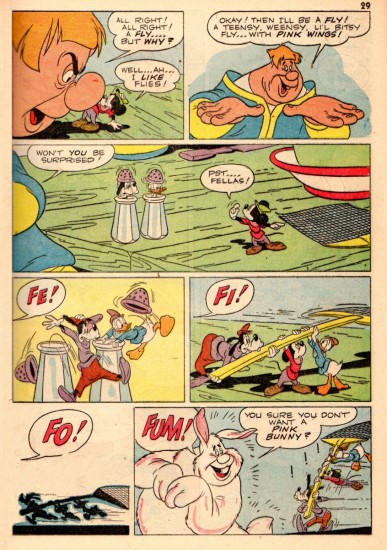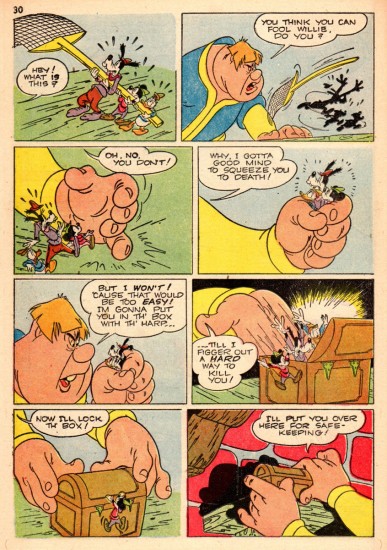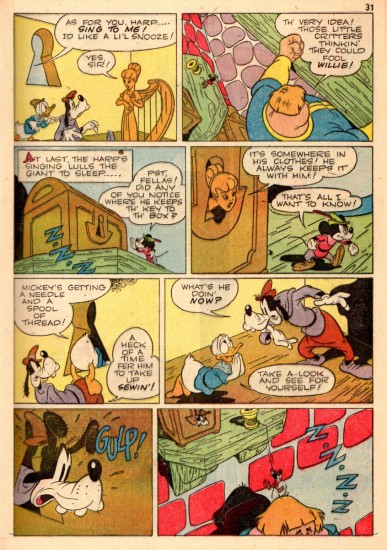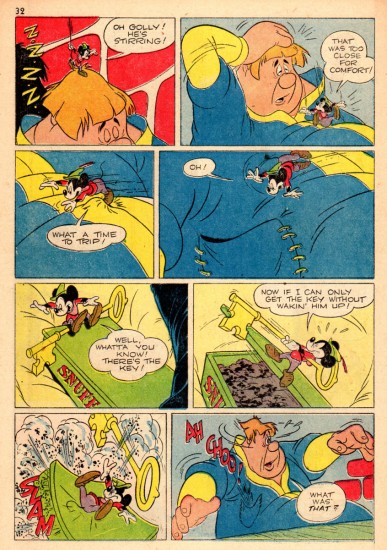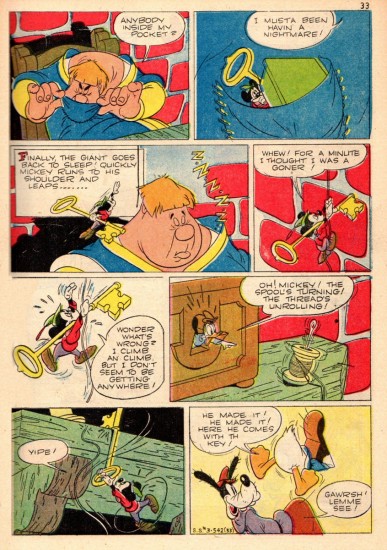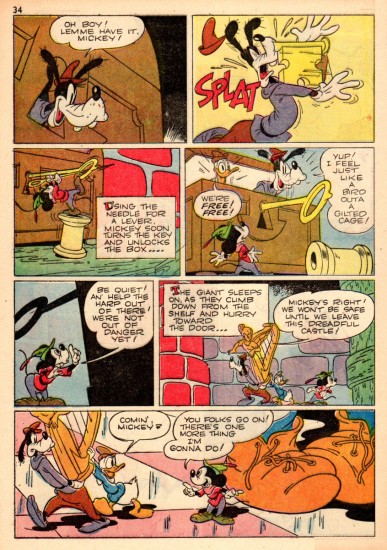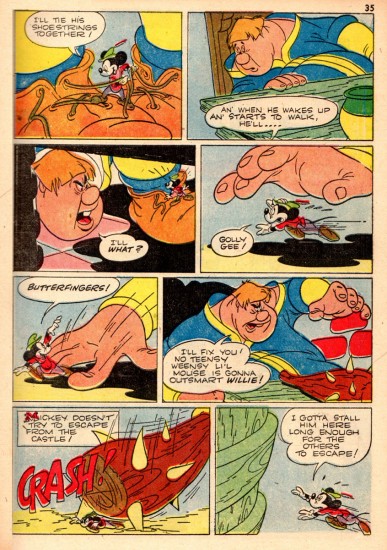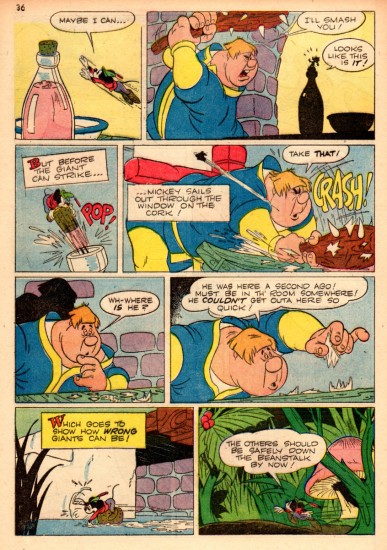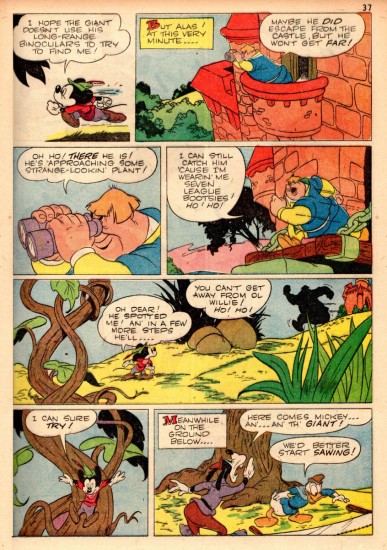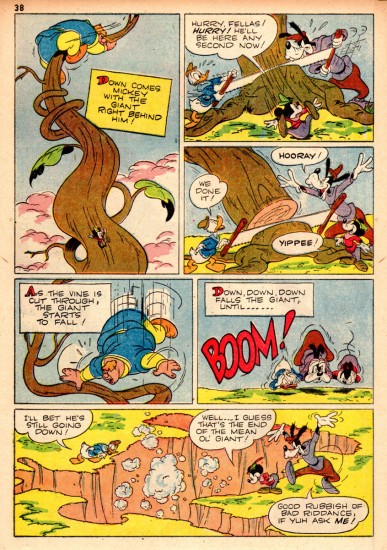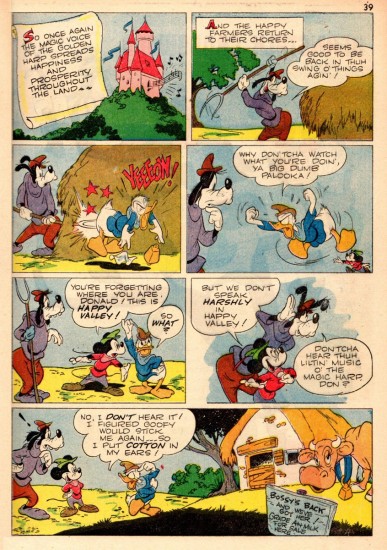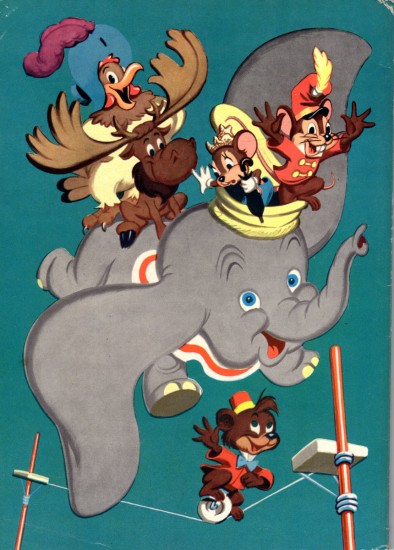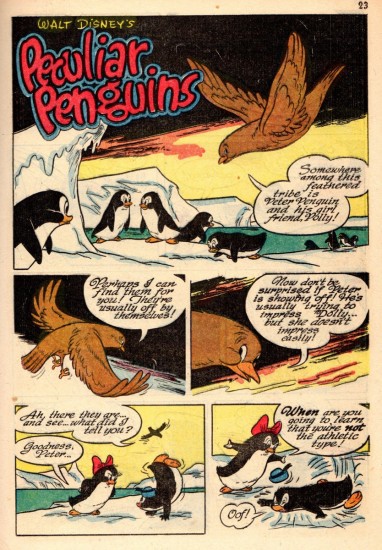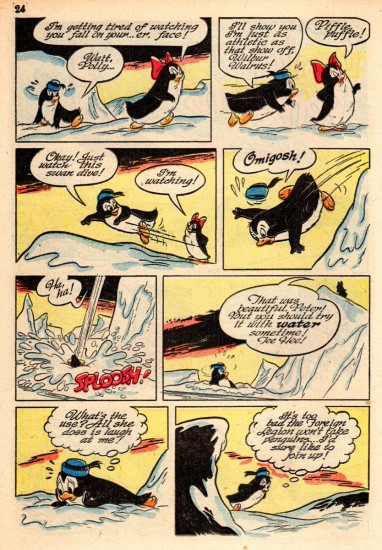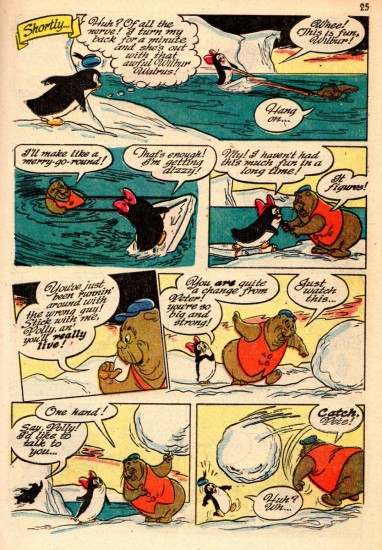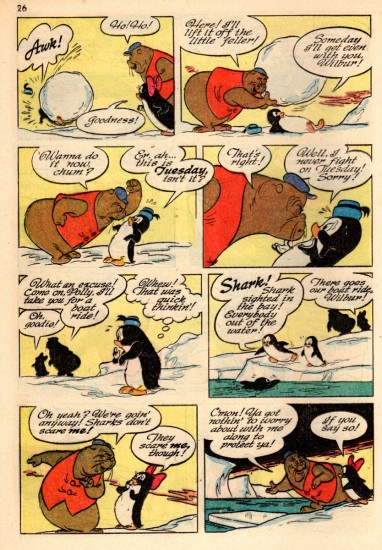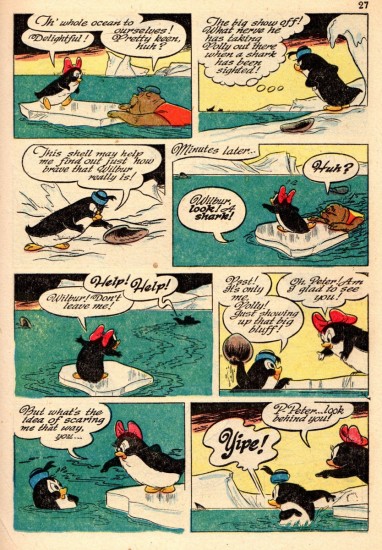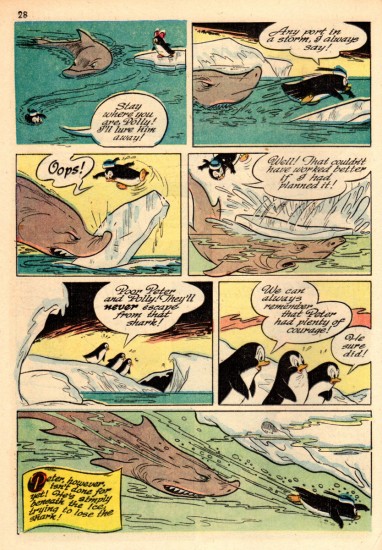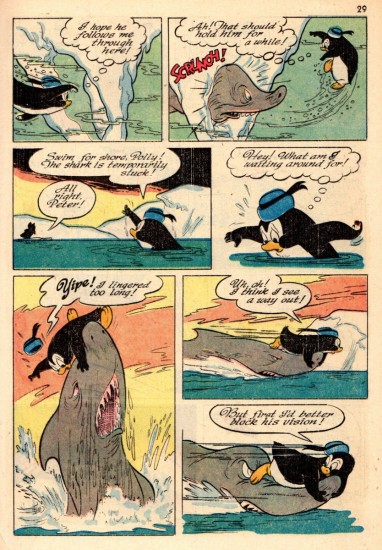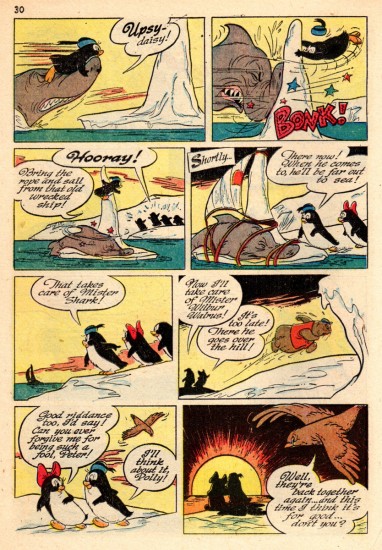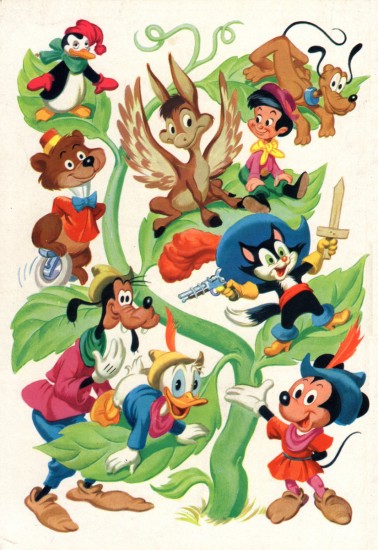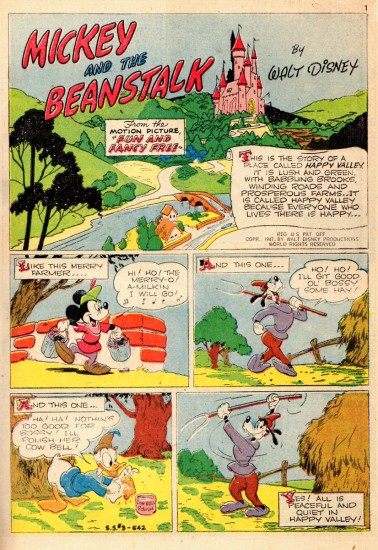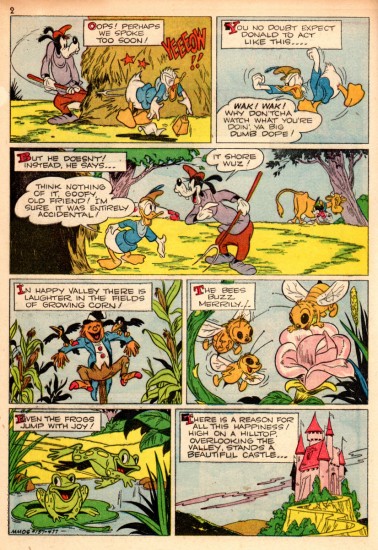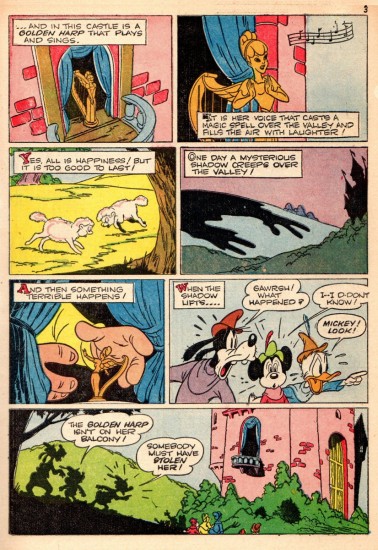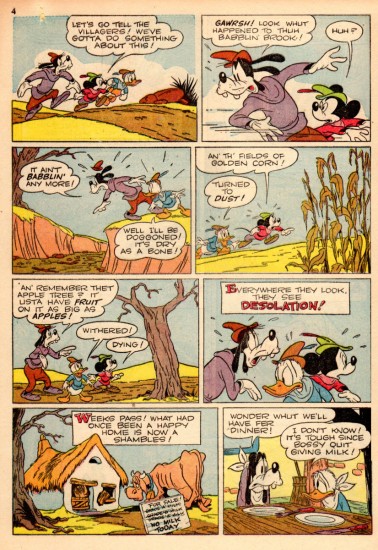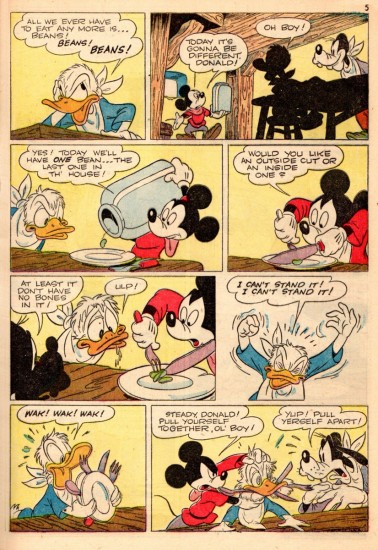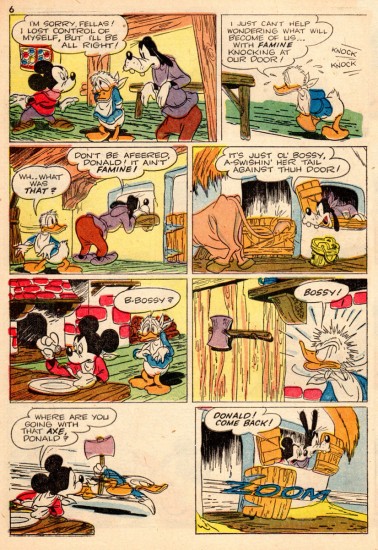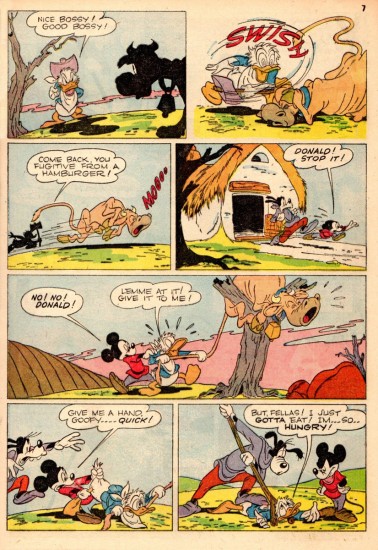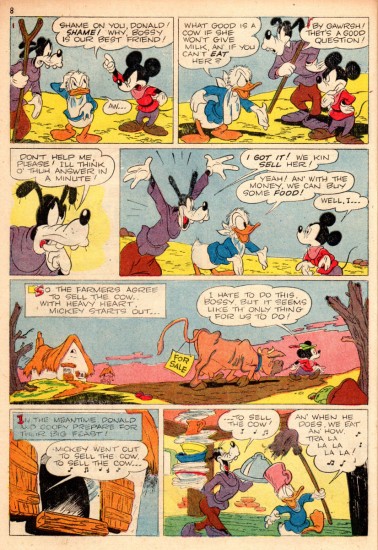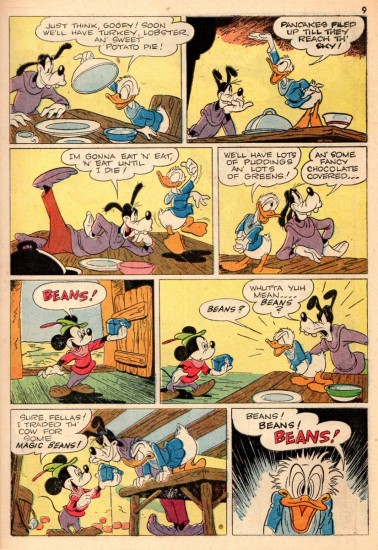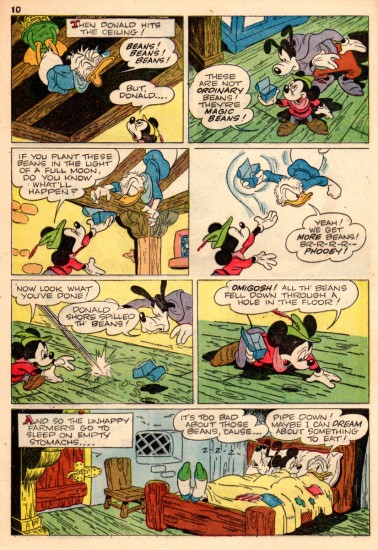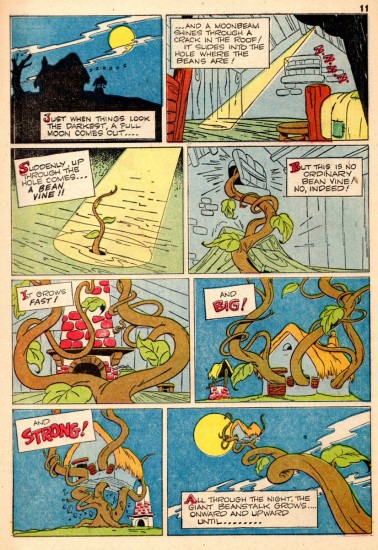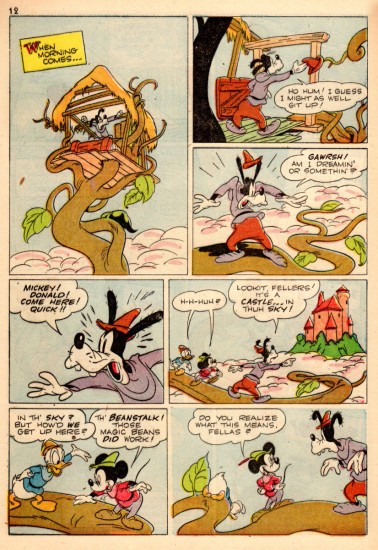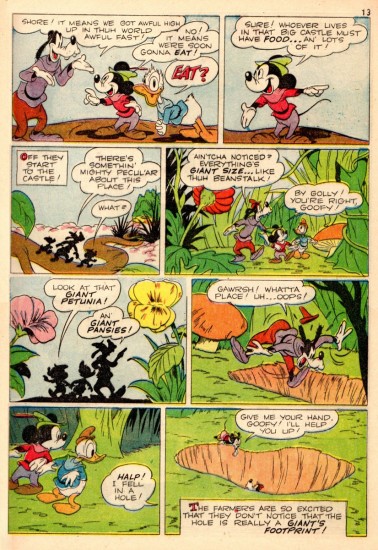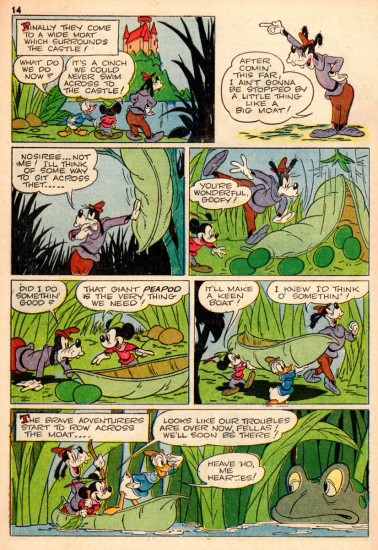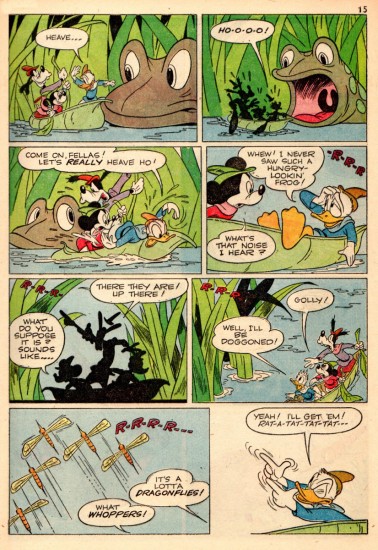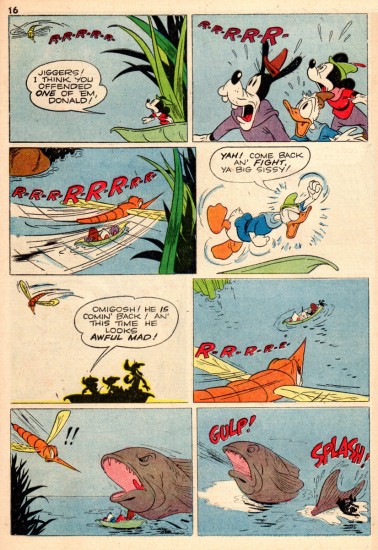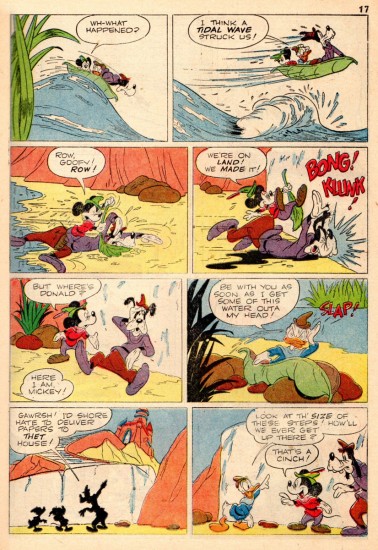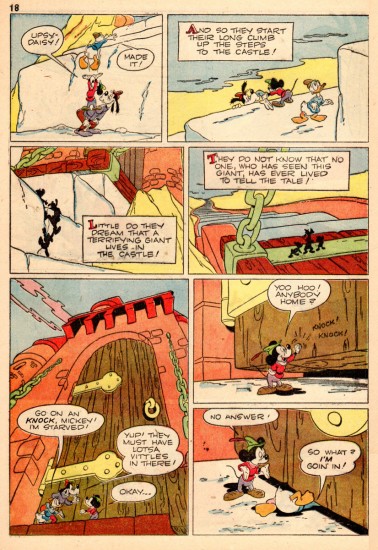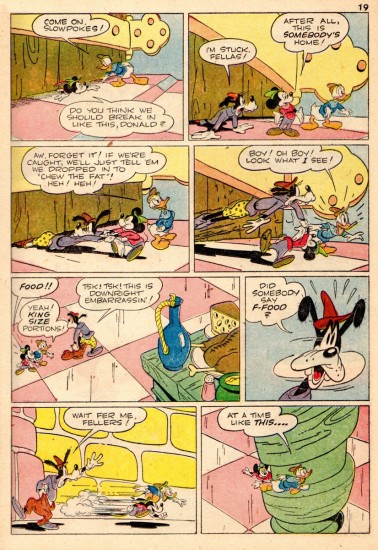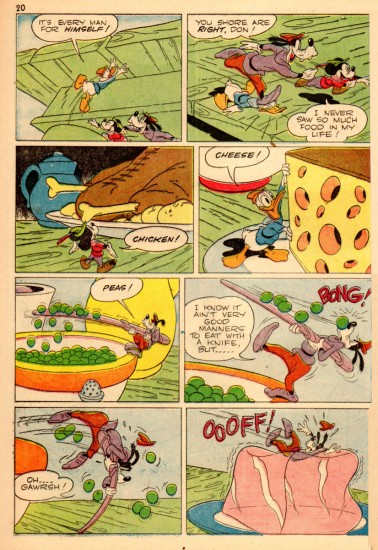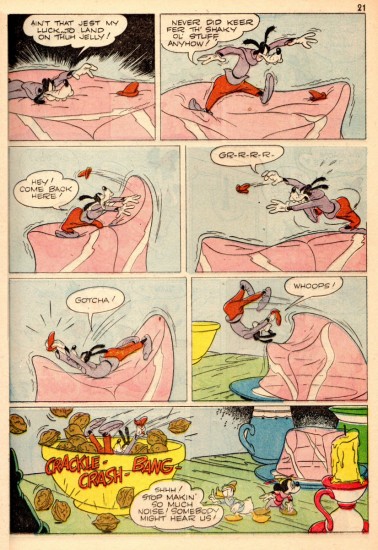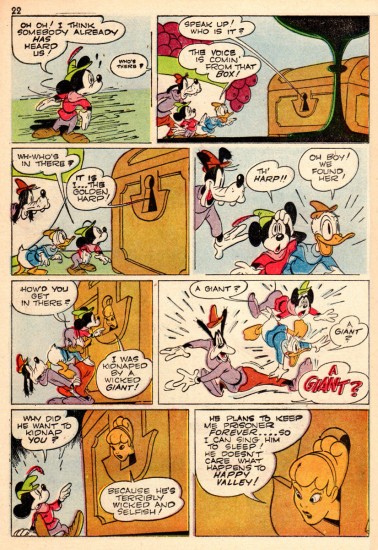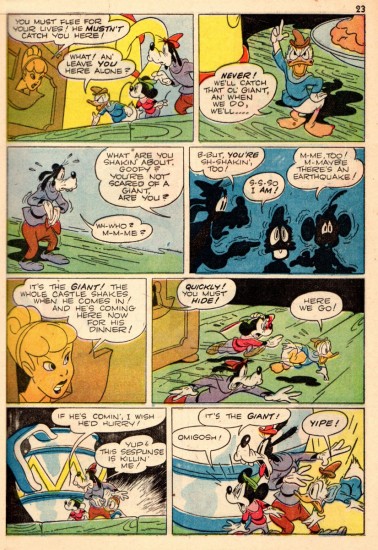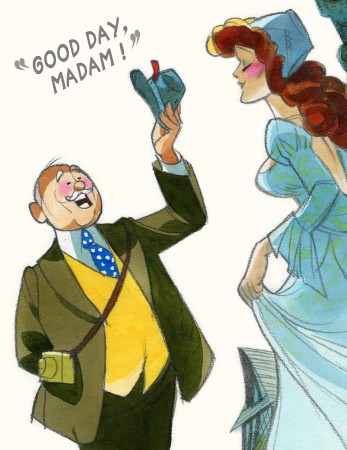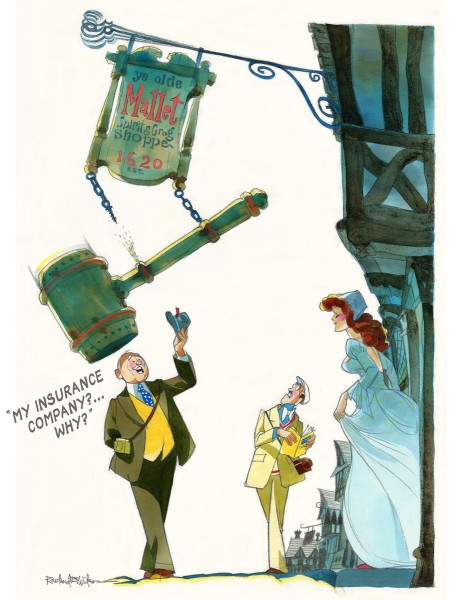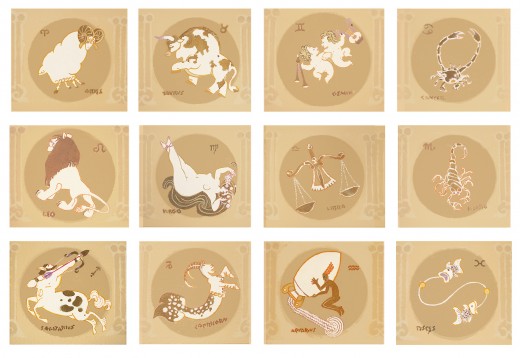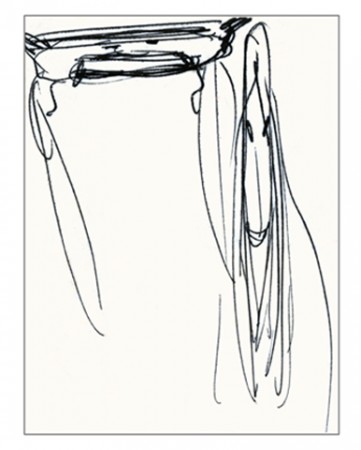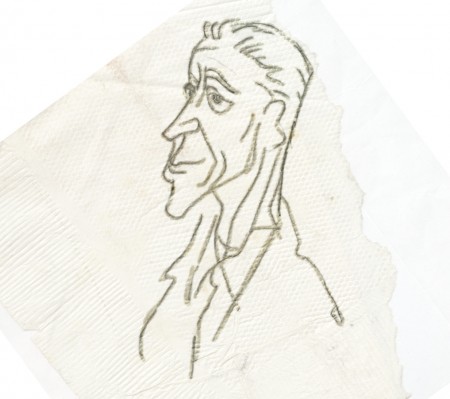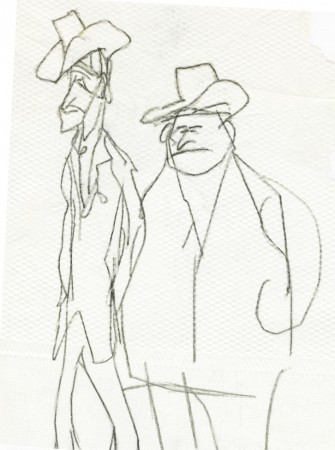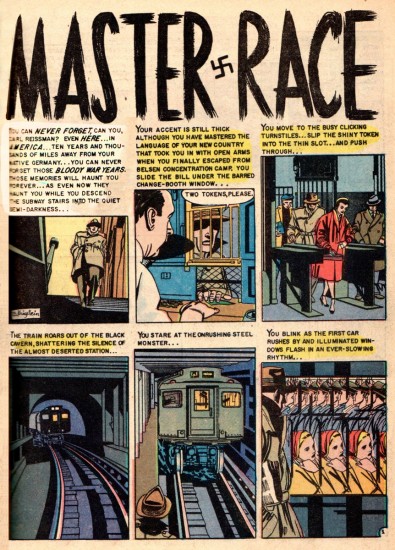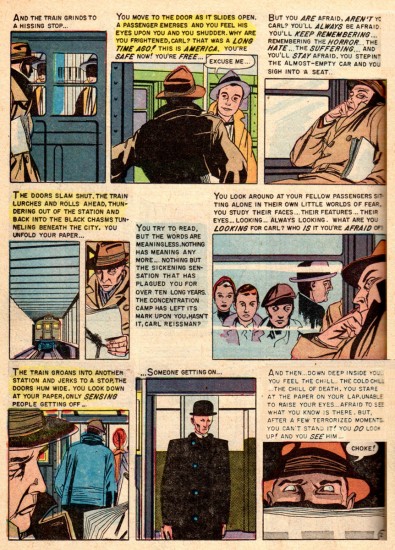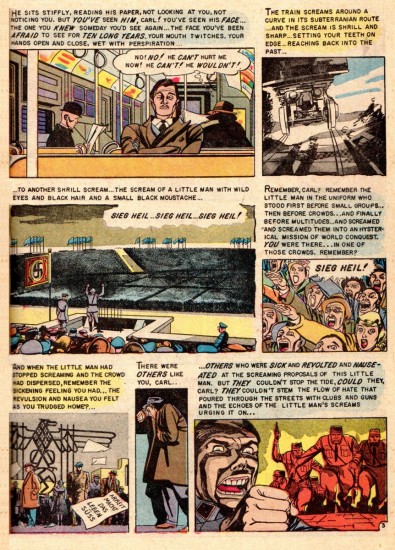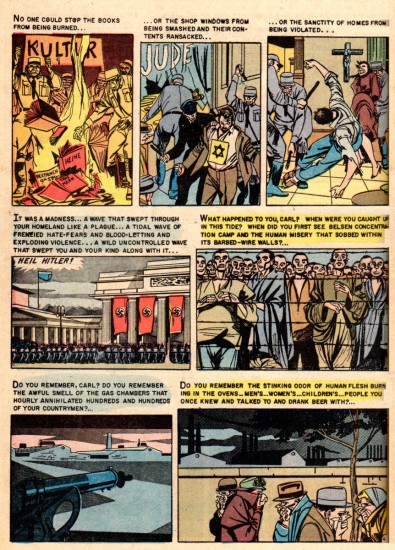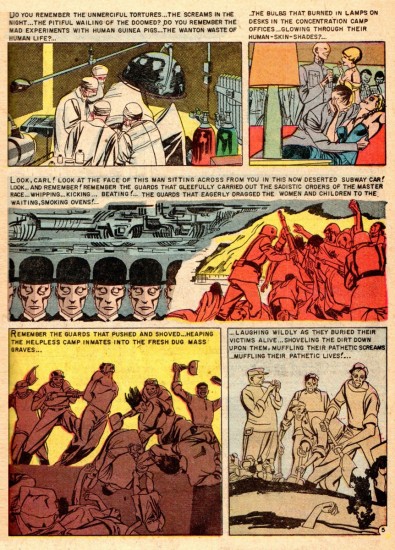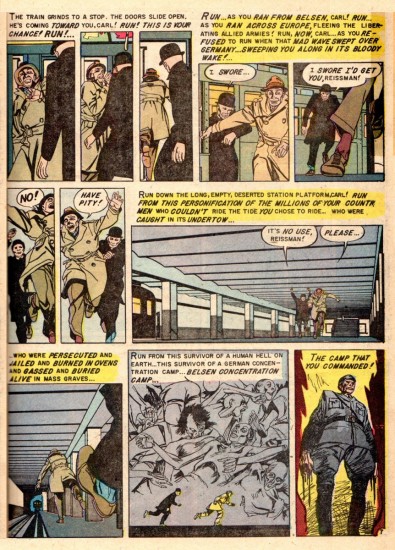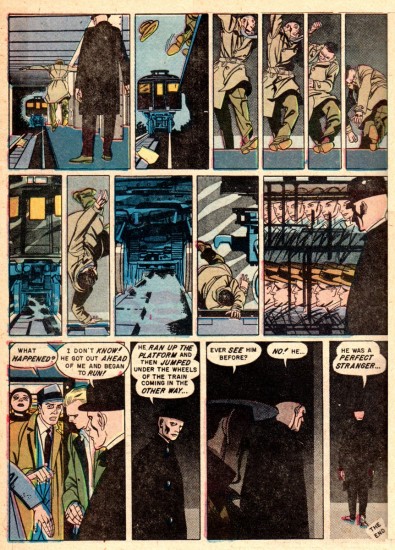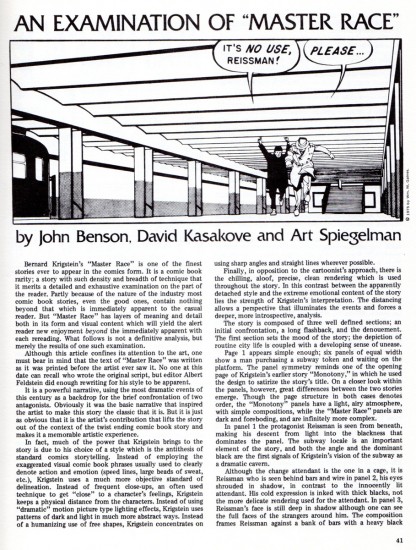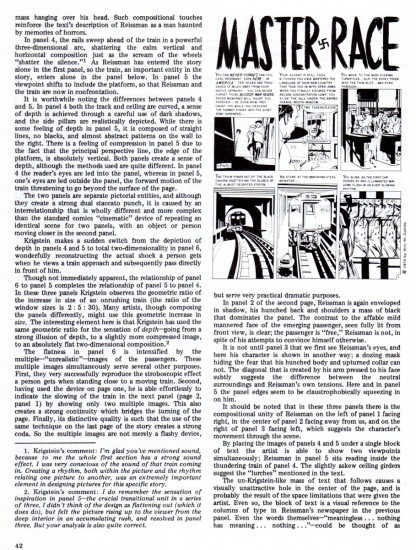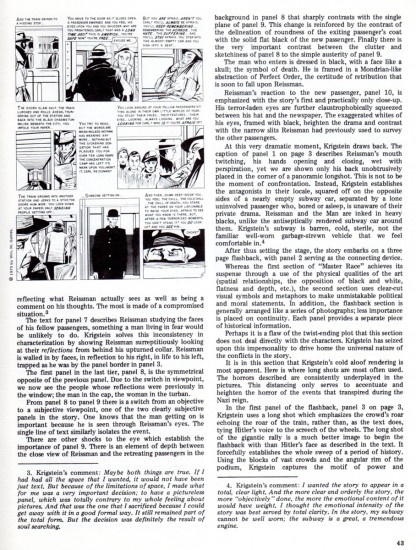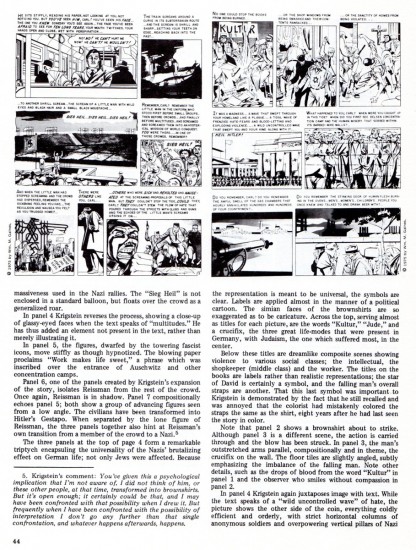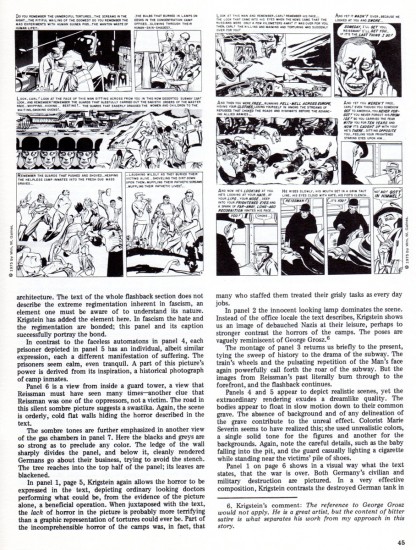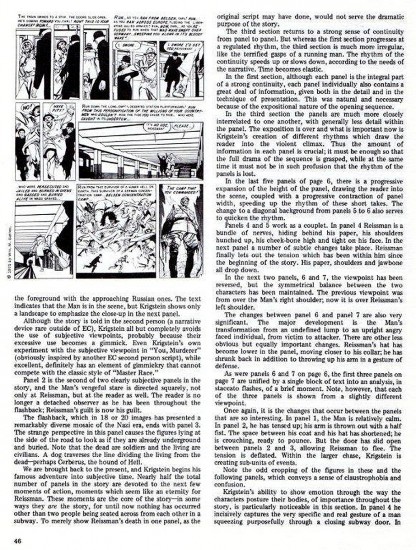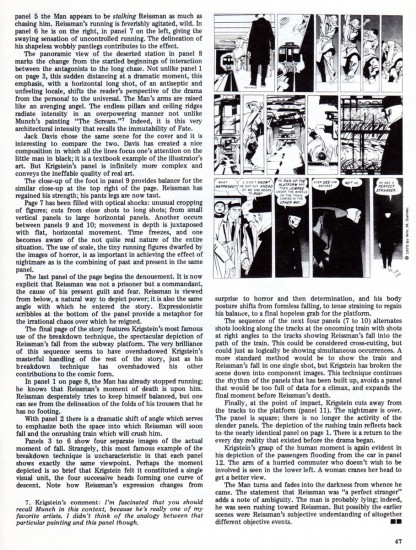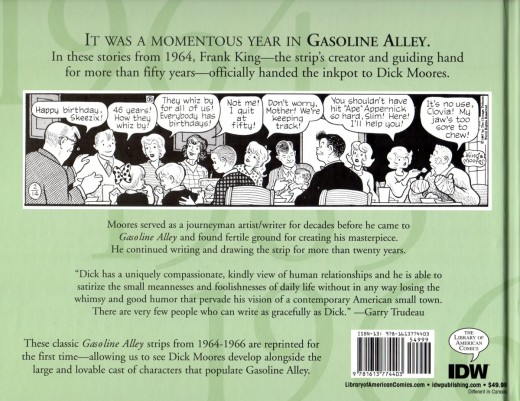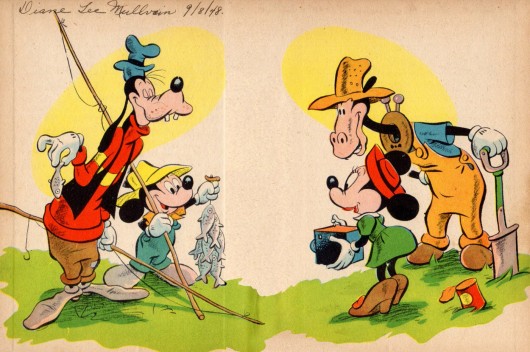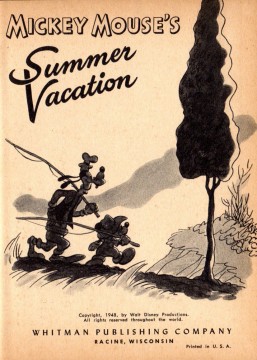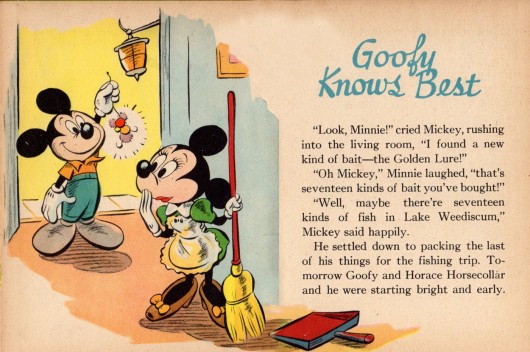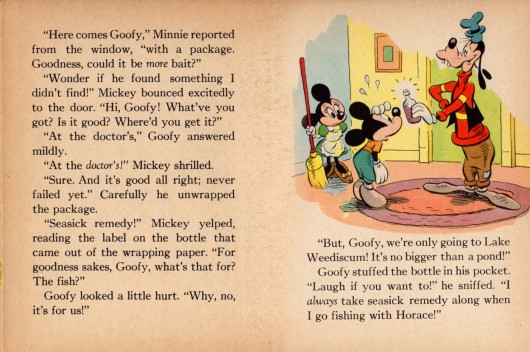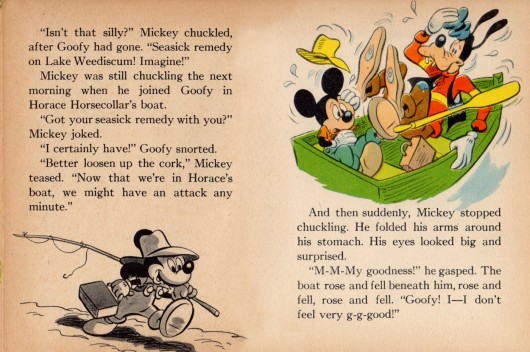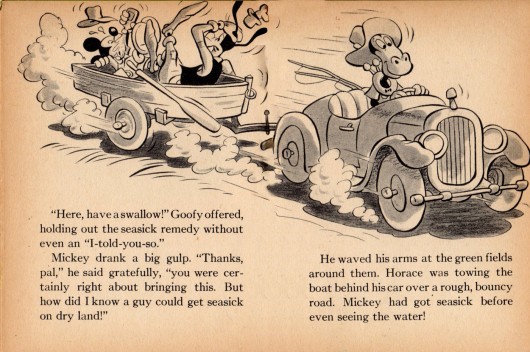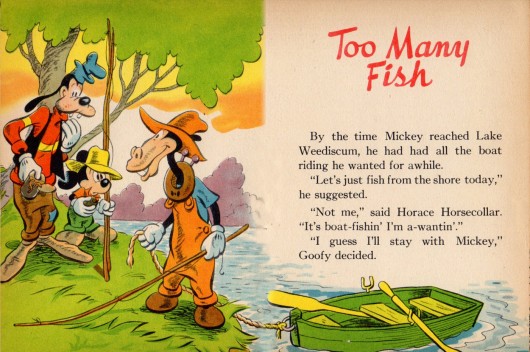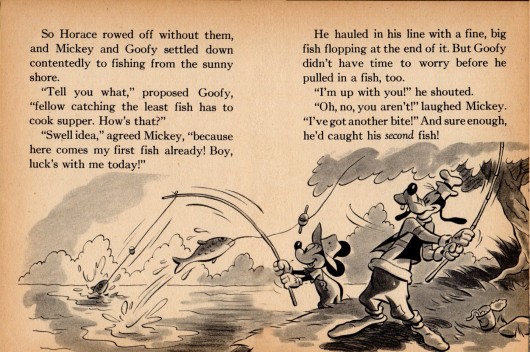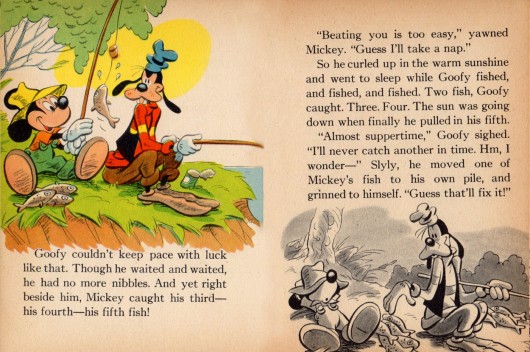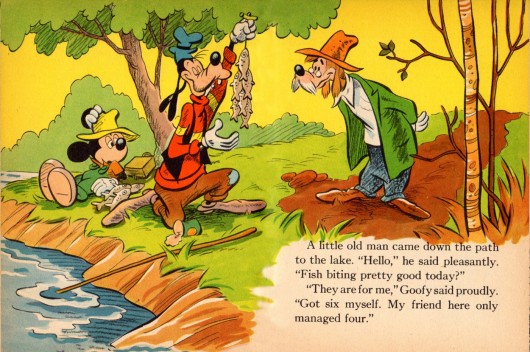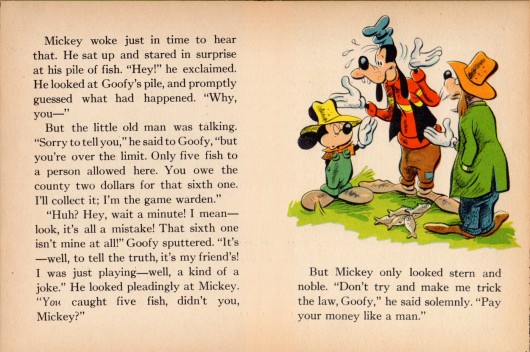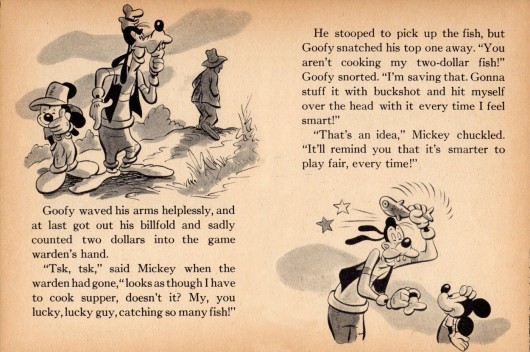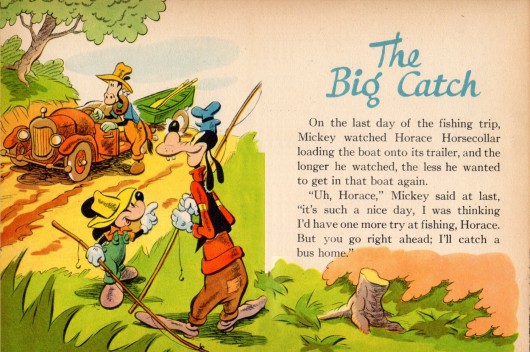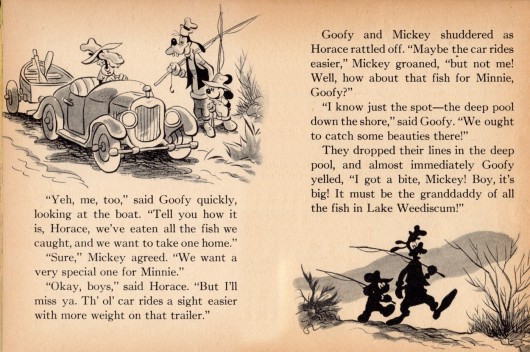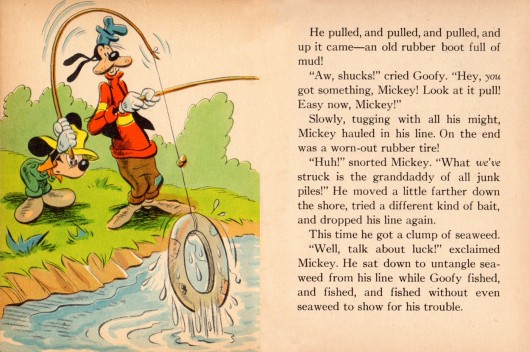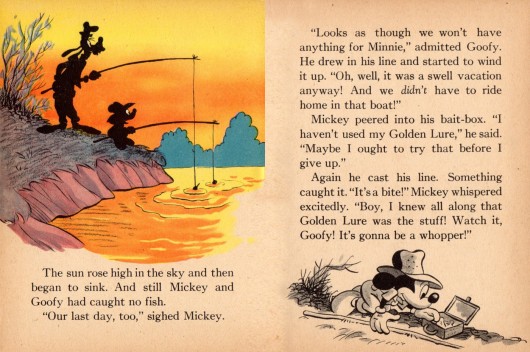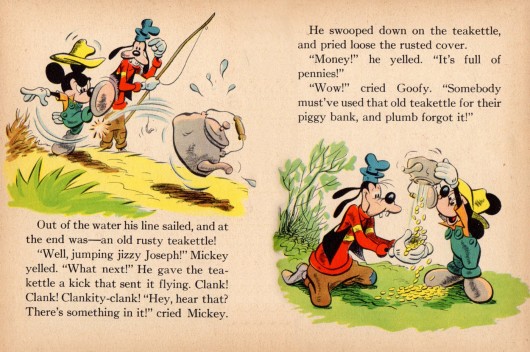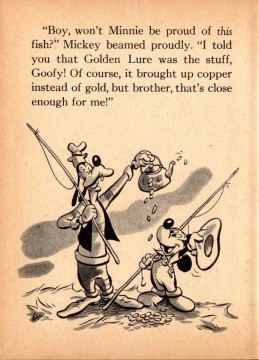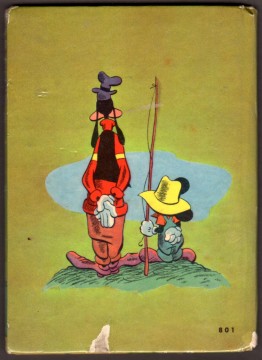Category ArchiveBill Peckmann
Bill Peckmann &Comic Art &Illustration 13 Dec 2012 08:00 am
Bernard Krigstein – Crime, Horror, Sci Fi
Having begun last week with an exceptional post, courtesy of Bill Peckmann, on Bernard Krigstein, we can only try to do another one. We certainly can’t top any of his artwork.
(Go here to read that past post.)
So here, again thanks to Mr. Peckmann, more great art. Bill takes over the writing from here on out.
- With his ground breaking, graphic, illustrative comic book pages, Bernard Krigstein did some of the best EC Comics art ever.
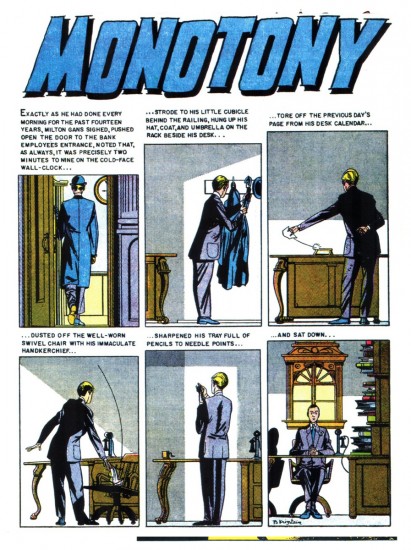 1
1He excelled in their genre of crime comics…
- But Bernie also did two stories for Harvey Kurtzman’s MAD comic book and a few illustrations for Harvey’s early MAD magazine. Here is all of Krigstein’s art work for MAD.
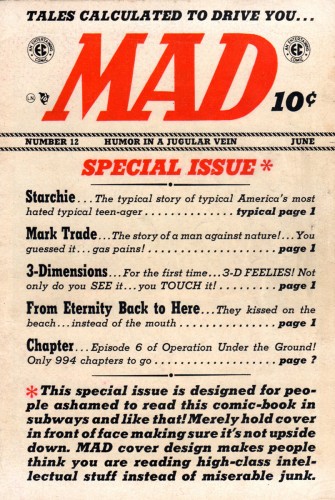 1
1Starting with MAD #12, June 1954, is Kurtzman’s and Krigstein’s 7 page
movie spoof titled “From Eternity Back to Here”.
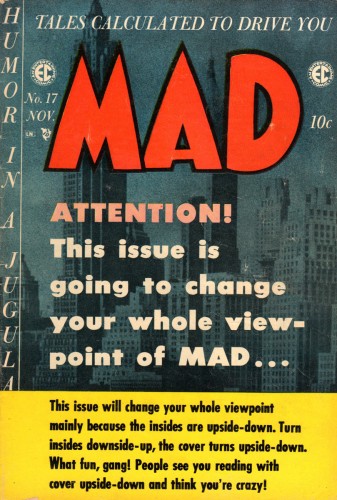 9
9
Here from MAD comic book #17, Nov. 1954,
is “Bringing Back Father”, a comic strip send up
done by using the talents of Harvey Kurtzman,
Bill Elder and Bernard Krigstein!
For the first issue of Kurtzman’s MAD magazine, # 24, July 1955,
Krigstein did two illustrations to accompany a story done with text.
Here from MAD magazine # 26, Nov. 1955, are a few story illustrations by Krigstein.
It would be the last time that he and Harvey Kurtzman collaborated.
Postnote from Bill:
For those readers who are coming upon Bernie Krigstein for the first time and like him, there are still two very worthy books available on him through Amazon. Both are authored by Greg Sadowski, Vol. 1 is a bio, it’s an excellent bio, especially his early life, with many illo’s, both are out of print but not cost prohibitive.
Take a look, here.
Bill Peckmann &Books &Illustration 07 Dec 2012 06:52 am
Raymond Briggs’ Father Christmas
In 1973 Raymond Briggs did this eccentric telling of Father Christmas, treating him as you would a real person. The book is funny, and John Coates followed up his adaptation of Briggs’ Snowman book into animation by doing this book as a video. It was almost as successful as The Snowman, though not quite. It relied on a different form of humor.
The film, Father Christmas, was released in 1997 and was nicely directed by Dave Unwin with a tour de force performance by Mel Smith as Father Christmas. However, watch out for later versions that use William Dennis Hunt as the VO character, they’ve taken all the purposeful darkness out of the character and have sanitized it to within an inch of its life.
However, the original Raymond Briggs book still exists, and that’s what Bill Peckmann has forwarded onto me, and I present it happily.
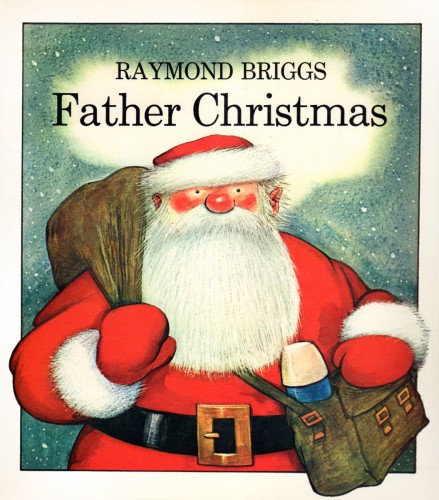 1
1
As a follow-up here’s a piece Bill found about Raymond Briggs:
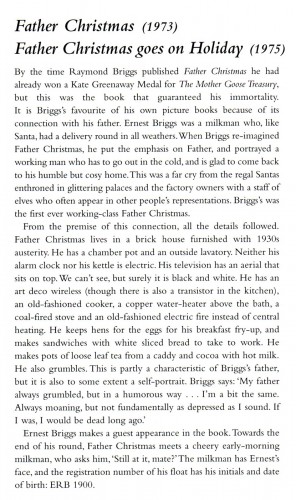 2
2
(Click any image to enlarge.)
Bill Peckmann &Books 30 Nov 2012 07:35 am
Weihmachtsfest in Wichtelland
Fritz Baumgarten has done Chrismas as well as any other illustrator out there. For the next four Fridays, beginning with today’s post, Bill Peckmann and I are presenting Christmas stories through the eyes of Mr. Baumgarten and other such great illustrators.
We start with this book, Weihmachtsfest in Wichtelland. And here to introduce this book is Mr. Peckmann:
- As a kid many years ago, if you had a favorite cartoonist, the only thing better than that was when that cartoonist did a Christmas book or story for the Holiday Season. Here is a charming Christmas confection by Fritz Baumgarten and a delicious delight it is, both the single color pages and the full color ones. Enjoy.
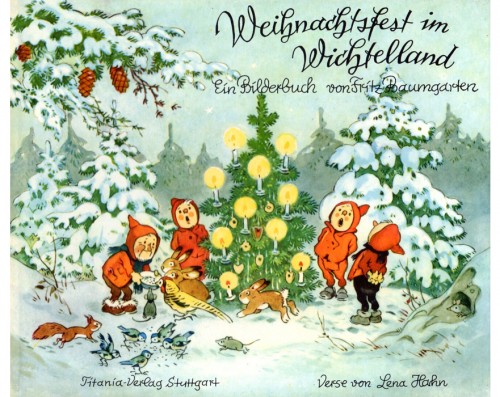
The book’s cover
.
The End
Bill Peckmann &Comic Art &Disney &Miyazaki &Models 23 Nov 2012 08:28 am
More Moores
Years before Dick Moores got near the smell of Gasoline Alley, he had a bulging career at Disney’s doing books. Long before he ever thought of drawing Walt or Skeezix, he was a master of the Mouse. Bill Peckmann has sent me Goofy as the “Mechanical Wizard”, and I’ve rushed to put it together so I could read it. Here’s Bill’s opening salvo:
- Continuing with the posting of Dick Moores ‘Disney’ career, we have here one of the classic Mickey Mouse comic book stories of the early 1950′s. It’s ‘Goofy’s Mechanical Wizard’, written and drawn by Dick, the story gives us a little glimpse of what will be in store for us once he was to take over the complete reins of the ‘Gasoline Alley’ comic strip, approximately a decade and half in the future. Surprisingly, here in his Mickey Mouse stories, there are no famous, rickety, ‘Gasoline Alley’ type bridges or catwalks. They would come later, but they would have been perfect for the hi-jinks of Mickey and especially, Goofy, with that in mind, Moores’ two MM stories would have made very enjoyable animated shorts.
Here then, is the cover and story of ‘Goofy’s Mechanical Wizard’.
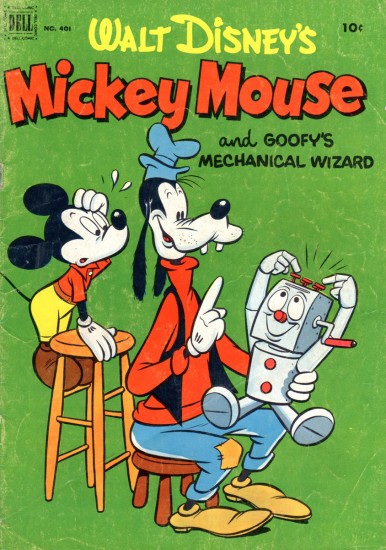
The book’s Cover
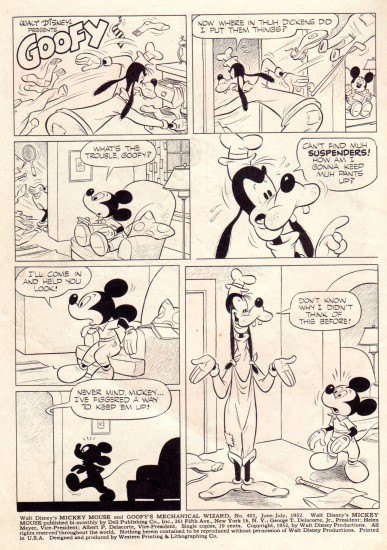 21
21
Inner covers of the magazine
And coming to a future Splog from Dick Moores:
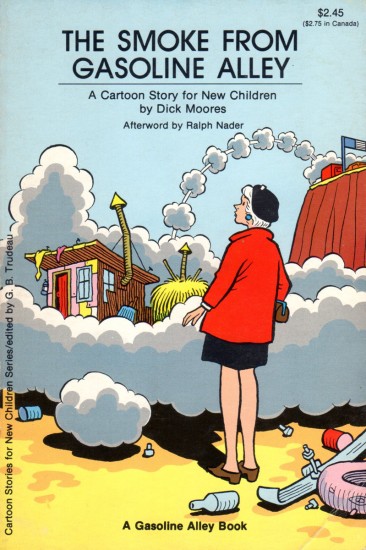 25
25
Bill Peckmann &Books &Comic Art &Disney &Illustration &Peet 20 Nov 2012 07:07 am
Moores’ “Jim Hardy” & “Lambert”
- Recently, on this Splog, we saw Dick Moores, who would eventually replace Frank King as the artist behind Gasoline Alley, as the artist behind the beautiful comic books featuring Mickey Mouse. Bill Peckmann continues with the Disney artist, Moores, as he gives us Lambert the Sheepish Lion, Bill Peet’s tale.
But first we saw an early strip drawn by Moores, “Jim Hardy”. Bill Peckmann is here to present some of the Moores history:
- When Dick Moores was assisting Chester Gould on his ‘Dick Tracy’ strip in the 1930′s, his big dream was to eventually have a daily strip of his own. In 1936, he was finally able to fulfill that wish with the comic strip ‘Jim Hardy’. It lasted from 1936 to 1942. He left ‘Jim’ to join the ranks of the Disney comic strip dept. in ’42.
- In this 1977 Hyperion Press’ book of reprints we get to read Dick’s version of how the strip came about (and what a sweet read it is) and also included are the first 21 dailies of the strip.
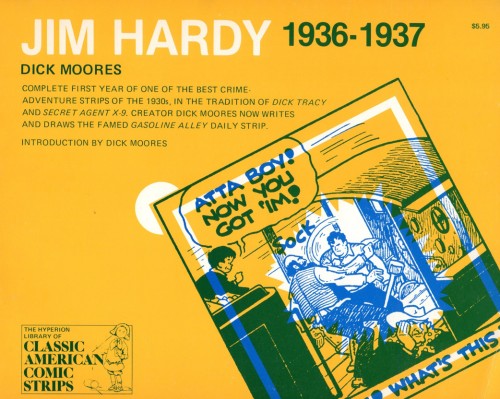
The cover page of this Hyperion Press collection of strips.
 15
15
Thanks to Germund Von Wowern we have an original ‘Jim Hardy’ strip from the early 1940′s. Beautiful ink work! (Sorry about the rubber cement stains in the word balloons, those are left over from re lettered foreign language versions of the strip.)
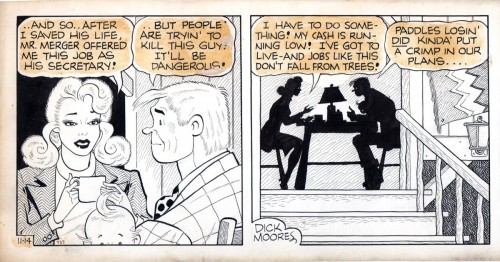 16A
16A
Here, I’ve broken the original strip into two parts
so that we can see it fully enlarged.
In this 1953 story Dick Moores had a great time adapting the Disney short ‘Lambert, the Sheepish Lion’ to the pages of a comic book. The more I look at the art, the more I start to get the feeling, that in Dick, the cartoonist, there was always an illustrator trying to get out. Some of these panels would have made pretty good page illustrations. (Which makes one wonder and dream of what a comic book page would have looked like if it had been done by the one and only Bill Peet!?!)
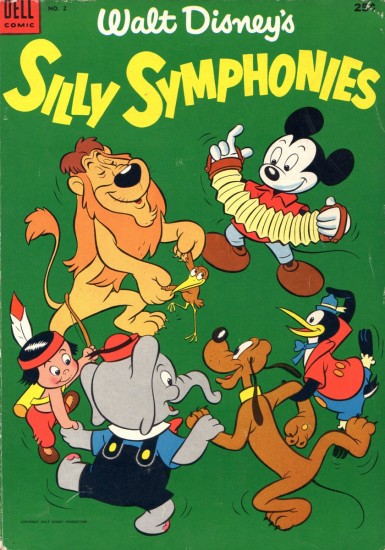
The comic book cover which contained Lambert.
In Part 2 we’ll continue celebrating the art of Dick Moores and the release of Library of American Comics’ “Dick Moores’ Gasoline Alley”!
Bill Peckmann &Comic Art &Disney 16 Nov 2012 07:51 am
Eisenberg’s Mickey – part 2
- Last week we began this post. Harvey Eisenberg took success in doing the Tom and Jerry comic books for many years, but he began with Mickey Mouse. We began posting the great story, Mickey and the Beanstalk, last week, and here is the finish. Bill Peckmann has been doing much of the heavy loading by scanning and sending the material on to me. Here’s Bill’s comments on the piece:
- ‘Mickey…’ was a very fortunate pairing of cartoonist and story, it’s hard to picture anyone else doing a better job of adapting that movie to the comic book page than Harvey Eisenberg. There’s some really good stuff going on in these pages, the work was done 65 years ago and doesn’t seem dated at all.
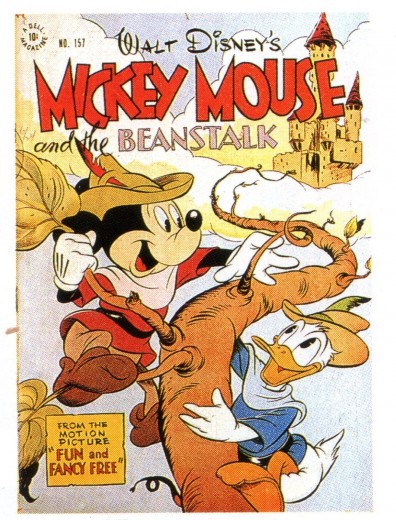
Here’s a reproduction of the original
Dell comic book cover for
‘Mickey and the Beanstalk’ from 1947.
It is now 1953, six years after Harvey Eisenberg did ‘the Beanstalk’ story, he did this story for ‘Silly Symphonies’ no. 2, it’s titled ‘Peculiar Penguins. It’s beautifully done, he’s encroaching on Walt Kelly territory, with his characters, posing, spotting blacks and oh, that lovely lettering!
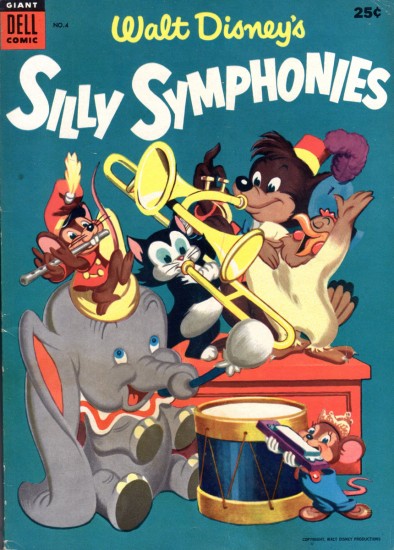
The “Penguins” front cover
Bill Peckmann &Comic Art &Disney 13 Nov 2012 07:27 am
Eisenberg’s Mickey – part 1
- Here’s a gem of a comic story/adaptation drawn by Harvey Eisenberg for Silly Symphony Comics. Bill Peckmann scanned and sent the book, and I am enormously grateful. Here’s the magazine and bill’s comments:
- As a kid reading Dell Funny Animal Comics there were a number of ‘good guys’ cartoonists who one always looked forward to seeing. Harvey Eisenberg (of course we didn’t know his name then, just like Barks) was always near the top of this ‘good guys’ list. He was sometimes called the Carl Barks of ‘Tom and Jerry’.
- Harvey Eisenberg‘s ‘Mickey and the Beanstalk’ first ran in 1947. This here is a reprint from 1953 which was in ‘Silly Symphonies’ no. 3, 25 cents comic book. If you think about how daunting it would be to bring a Disney movie to the comic book page, all I can say is that Mr. Eisenberg did an excellent job.
- Here are the front and back covers of the comic book. They were penciled by Paul (â€Buck O’Rueâ€) Murry and the finished art was done by Donald T. MacLaughlin (see comments). As a kid I was always a sucker for these Disney illustrated/painted covers, and still am.
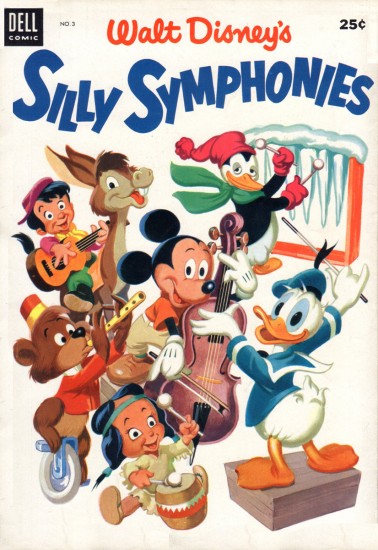
Front Cover
.
To be continued, on Friday, Oh migosh !
Bill Peckmann &Books &Guest writer &Illustration &Rowland B. Wilson 12 Nov 2012 07:26 am
The Secrets Behind Trade Secrets
- Suzanne Lemieux Wilson, wife of the late Rowland B. Wilson, just sent me a guide to how she, with information from Rowland, put together their invaluable book of notes called Trade Secrets. Seeing the skeleton come together for this book is quite an informative document, and I couldn’t be happier that she trusted my blog to relay the information..
Some of these illustrations and pictures have passed across this blog before, but they take on a very new meaning here, so I’m glad to post them anew. I have to thank Suzanne for the gift of this post especially given some of the hard work I know it took to scan and send documents that are large enough to work here.
By the way, if you don’t have this book, you should. The book offers an enormous amount of information about his design for animation as well as for the printed cartoon and illustration trade. How ofen does a genius of his craft offer such a guide to the “trade secrets”? Trade Secrets is an invaluable book.
May I suggest that you click any image as you go through to enlarge them and get a better look at the illustrations and the type. It’s great stuff.
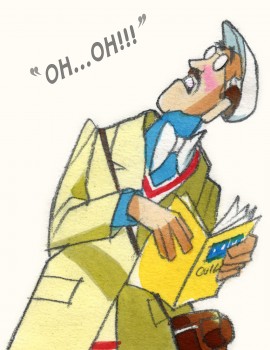 1
1
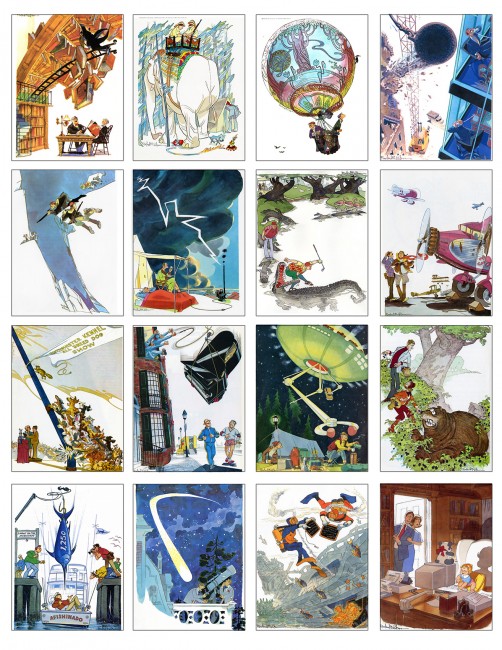 4
4
The insurance campaign ran for eighteen years–
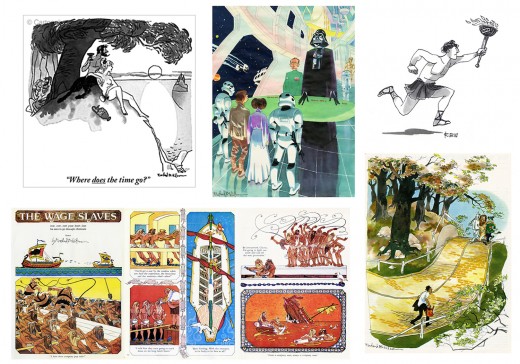 5
5
Rowland also drew cartoons for the New Yorker, Esquire,
The Saturday Evening Post, Playboy and others.
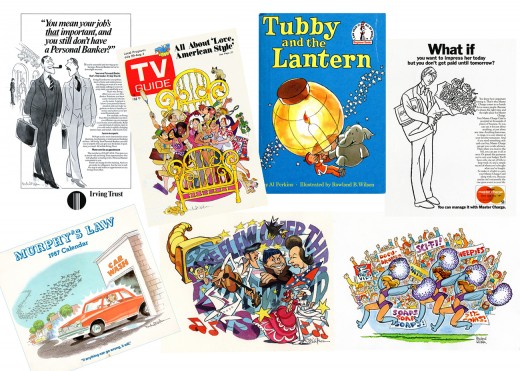 6
6
As well as illustration and advertising.
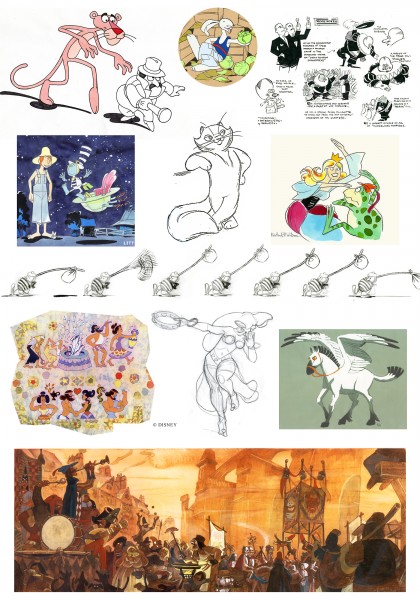 7
7
Rowland’s first and last jobs were in Animation, with many
interspersed throughout his career.
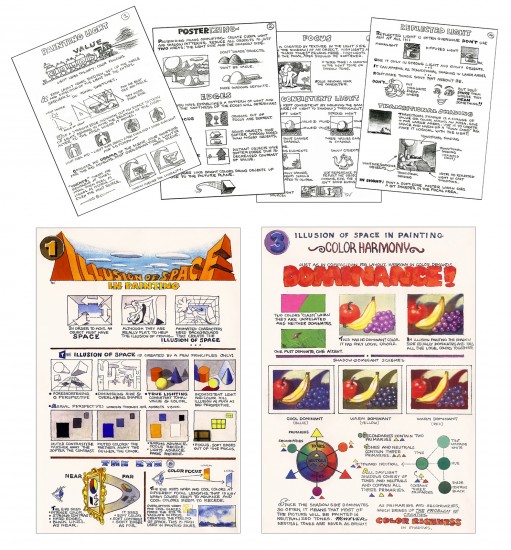 8
8
Rowland devised illustrated instruction pages as quick reference
guides for the Layout, Background and Animation staff when he worked
at Don Bluth and Walt Disney Studios.
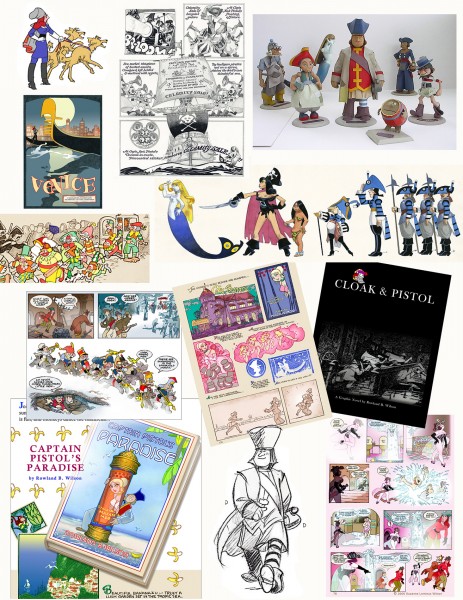 9
9
He worked on the Captain Pistol series of cartoon novels
from the 1970′s onward.
Captain Jack Pistol was a Retired Pirate and Rich Man who met with a
series of misadventures as he moved through various literary genres,
from swashbuckler to romantic comedy to spy thriller
to Western to science fiction.
Rowland sculpted three-dimensional models of the characters.
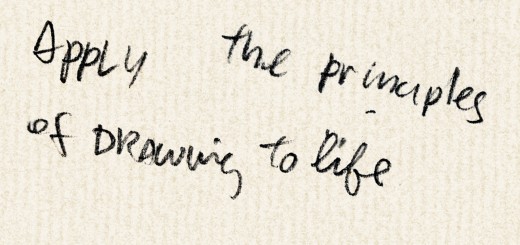
Rowland endeavored to apply the principles of drawing to life.

He created an artful environment to work and live in–
He designed and constructed a sunflower gate for the garden.
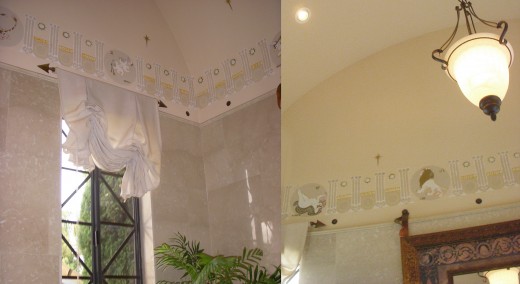
He painted the signs of the Zodiac around the base of a vaulted
ceiling…
He built a workbench for his woodworking projects and decorated it . . .
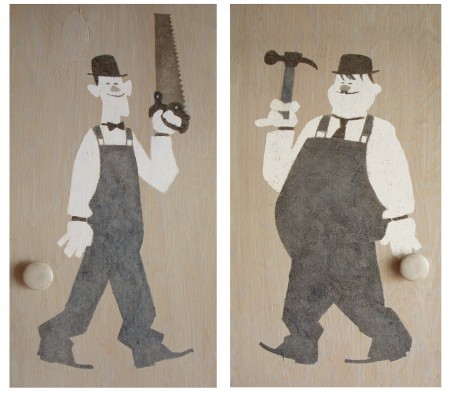 15
15
. . . with caricatures of Laurel and Hardy.
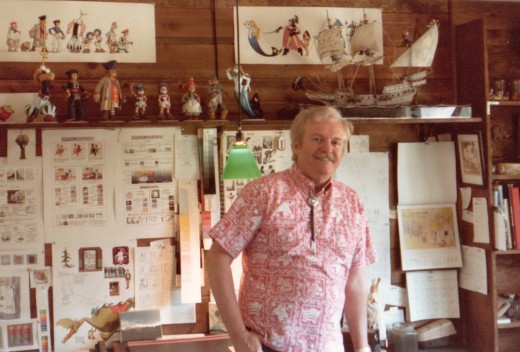
Because he worked in a variety of disciplines, Rowland sought
solutions that would apply to all of them and save him from “solving
the same problem over and over again”.

He consolidated the information into charts and hung them in his studio,
whether it was in Connecticut, New York, Ireland or California.
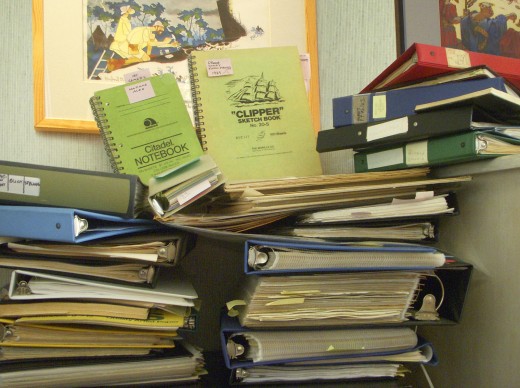
Rowland documented many techniques and observations.
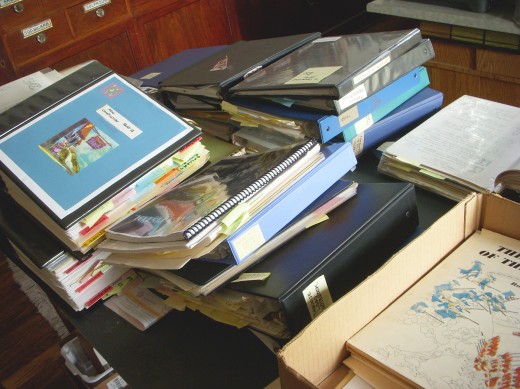
The writings and illustrations filled dozens of
notebooks, binders and sketchbooks.
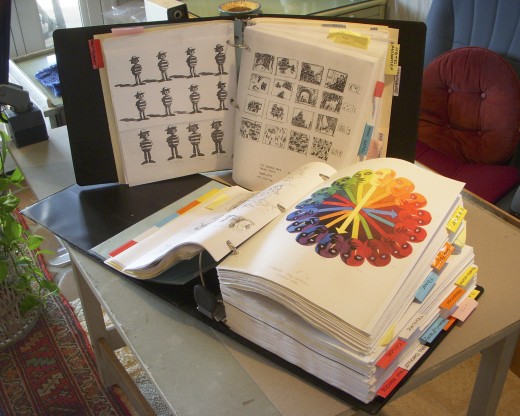
Much of it was xeroxed and consolidated into two giant binders as
resources for the book entitled Rowland B. Wilson’s Trade Secrets.
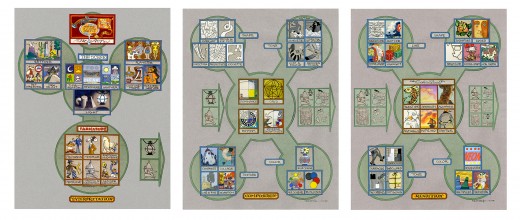
But the genesis for all of the notebooks and for Rowland’s oeuvre
were three flow charts that outlined procedures
that could be applied to any project.
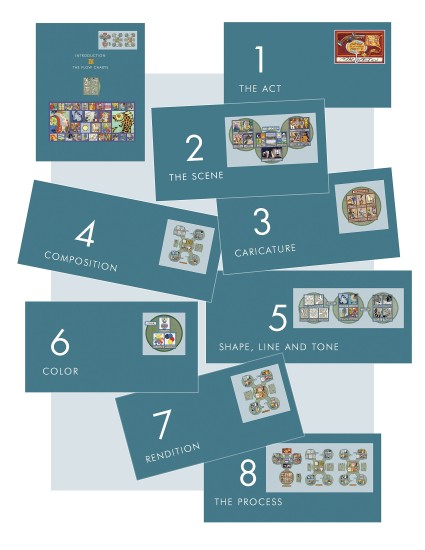 22
22
The Introduction of Rowland B. Wilson’s Trade Secrets describes the
Flow Charts in general. Then each chapter is based on an aspect
contained in them. The logo at the top right shows what aspect is
covered in the chapter.
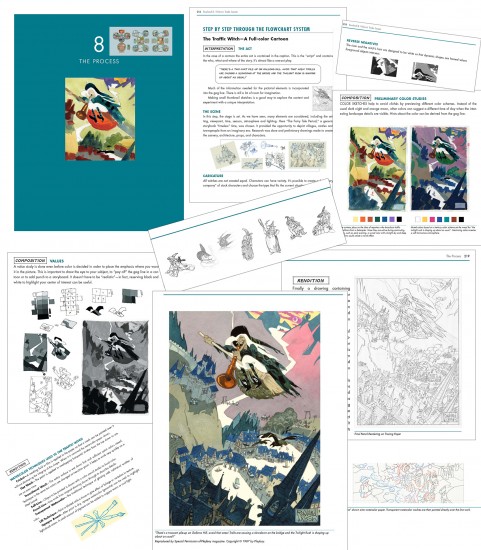 23
23
Chapter 8, the Process, follows a project from idea to finish
as it progresses along the Flow Charts.
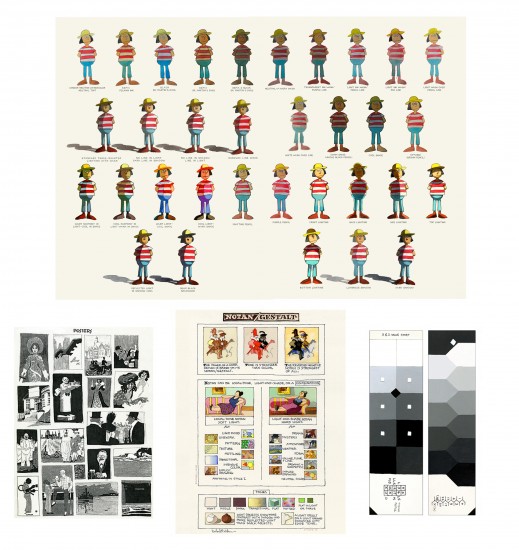
Chapter 9 presents many of the charts and posters
that actually hung on the studio walls.
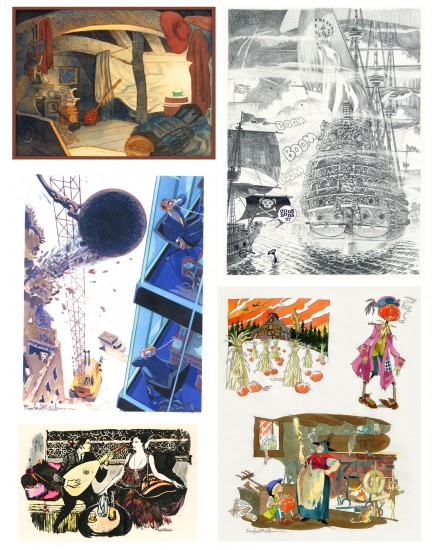 25
25
Chapter 11 shows a gallery of artwork throughout Rowland’s career,
including well-known images and some of his personal art,
never before published.
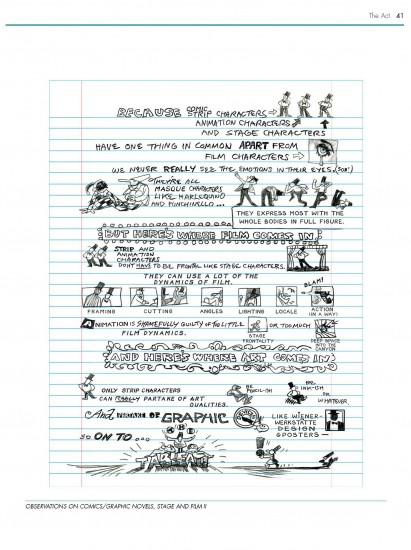 26
26
A page of observations on comics, graphic novels, stage and film:
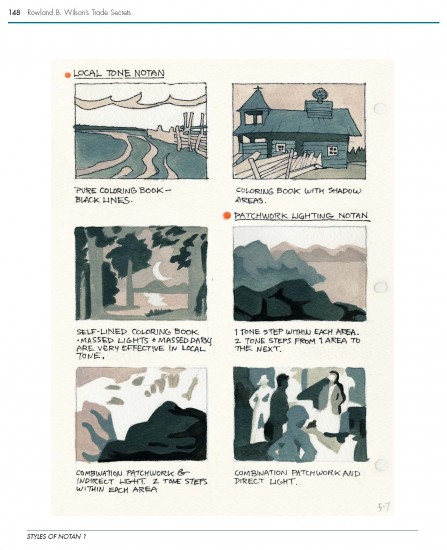 27
27
One of three pages illustrating Styles of Notan:
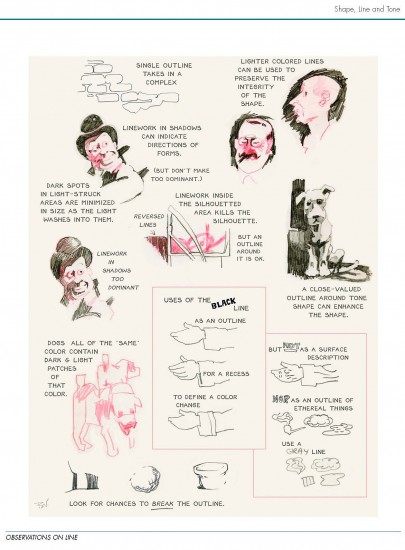 28
28
A page showing notes on various aspects of Line:
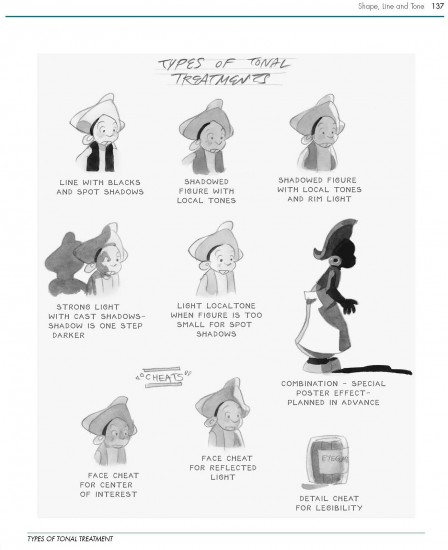 29
29
A page depicting various types of Tonal Treatments:
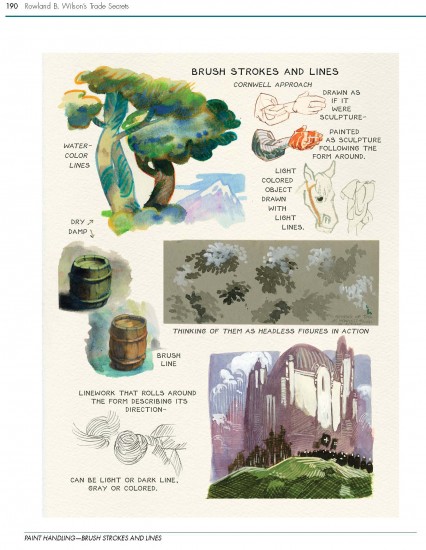 30
30
Demonstration of watercolor techniques:
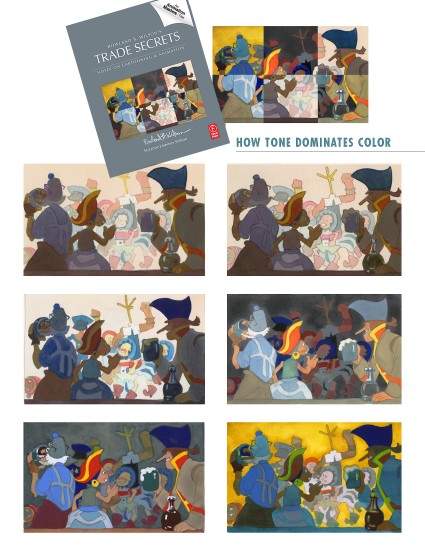 31
31
The cover image is a composite of 6 Value Studies showing the
dominance of Tone over Color:
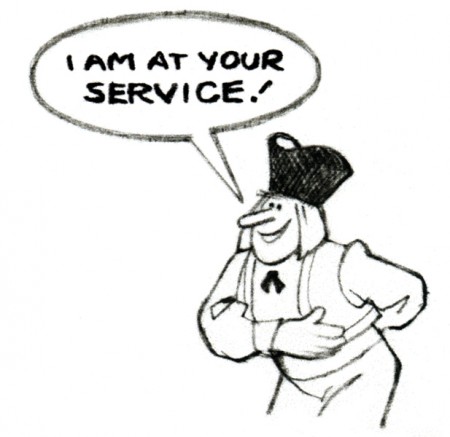
We hope you enjoy Rowland B. Wilson’s Trade Secrets and find
inspiration within.
With Special Thanks to Bill Peckmann for photograph of
Rowland B. Wilson in his studio.
_______________________
And as a bonus to this post, here are some drawings RBW did on a napkin at a lunch with Dick Williams.
Suzanne wrote:
- I discovered some vintage Rowland B. Wilson “doodles”, sketched on
napkins at Mario’s Restaurant in Westport, Connecticut–thought you
might enjoy them. The caricature of Suzanne and Rowland (image 2)
looks to me like the RBW take on Richard Williams’ drawing of us (image 3).
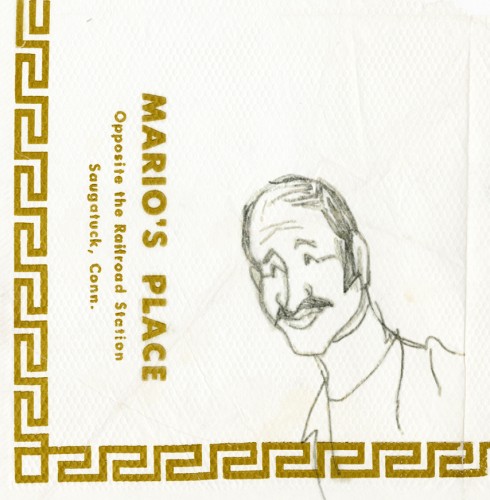 1
1Mario
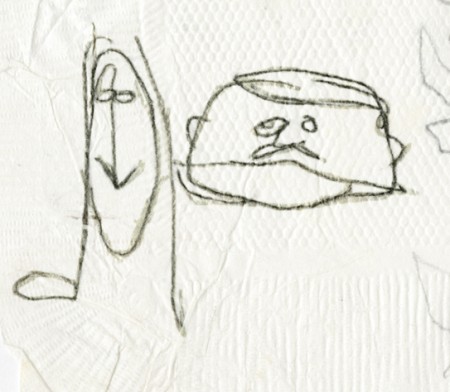 2
2
Suzanne and Rowland caricatures
Bill Peckmann &Comic Art &Illustration 09 Nov 2012 06:40 am
Bernard Krigstein’s “Master Race”
Bill Peckmann continues to introduce me to new and interesting artists. Here’s what he wrote abot Bernard Krigstein:
- Comic book artist Bernard Krigstein, like animation artist Fred Mogubgub, was ahead of his time. In the 1950′s, Krigstein’s page and panel designs with their distinct breakdowns set the pace for comic book art that followed later in the century.
Here from the original 1955 comic is his most reprinted story, “Master Race”. It appeared in the first issue of EC Comics’ “Impact”. It will be followed by an excellent essay/examination of that story which appeared in the EC fanzine “Squa Tront”, in 1975.
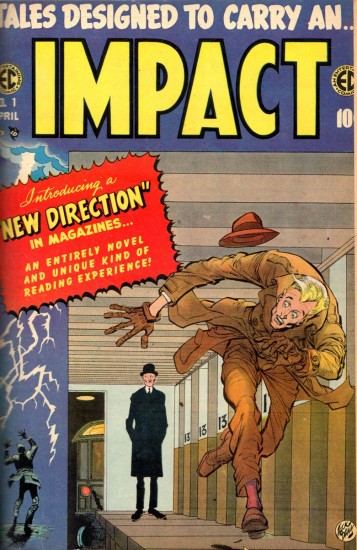
This is the cover of “Impact” No. 1 drawn by Jack Davis.
Here is an article which appeared in the fanzine, Squa Tront in 1975:
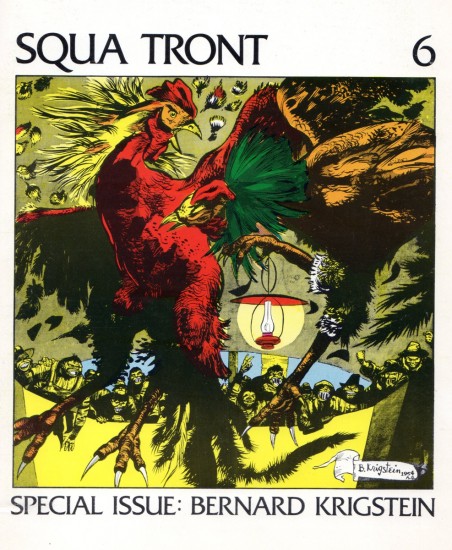
The Squa Tront cover
Bill Peckmann &Comic Art &Disney 06 Nov 2012 06:42 am
Dick Moores anew
- I’ve written about Dick Moores several times on this blog. He is one of my favorite comic strip artists. I knew him growing up with Gasoline Alley, which was about my favorite newspaper comic strip. Moores had taken over for Frank King, and the strip became something different and unique in his hands. There’s a roundness and a beautiful open quality to his character drawings. I find the style very appealing, and I also liked the stories. It took a while to learn that he’d also done a number of the Mickey Mouse comic books, which I also loved – (but not as much as those Gasoline Alley strips despite how great I think the Mickey comics are.)
- Here’s the 2010 post on Gasoline Alley: Dick Moores – 1
Here’s the post on the Mickey comic books: Dick Moores – 2
Bill Peckmann sent some scans to make up a good post about Moores and his work. Here’s Bill, writing about the post:
- Here’s a little triptych tribute we could give to master cartoonist Dick Moores. With tongue planted firmly in cheek, I would like to call it “The good, the bad and the ugly.”
Here’s the good: Dick Moores’ self caricature and capsule bio from R.C.Harvey’s terrific 1998 book, “A Gallery of Rouges: Cartoonists’ Self Caricatures”.
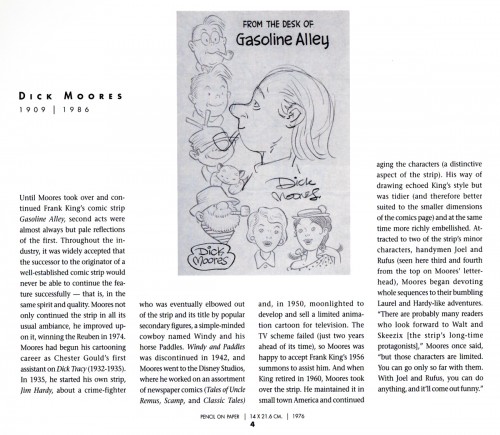
-
Here’s the bad: As in really bad, which in “today’s jargon” means exceptional, out of sight good!
It’s the new release of Library of American Comics’ “Gasoline Alley, by Frank King and Dick Moores, it’s the collected daily strips from 1964 to 1966. This vol. 1 is a dream come true for all Dick Moores fans. Done with the same scholarly quality as all of their long list of great books, LOAC’s “Gasoline Alley” does not disappoint in any way. Their front of the book bio of Moores, is illustrated with a lot of his, not easy to find, pre GA art!
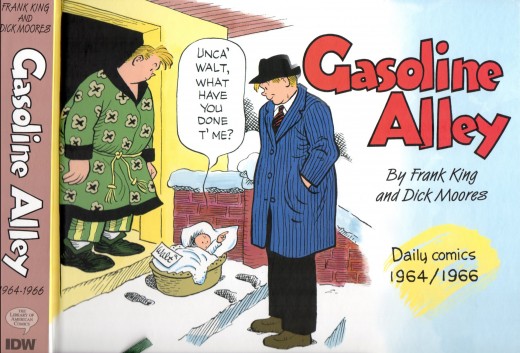
The front cover
- The ugly: This is meant and said in only the most positive way. Here we have a 1948 Mickey Mouse children’s book that was illustrated by Dick Moores during his sixteen year tenure at Disney’s comic book and comic strip department. His style in the book might not be as “slick” as the great Disney print guys of the day, but Moores brought a wonderful, heartfelt “folk artist” quality to this book that he always gave to all of his endevours.
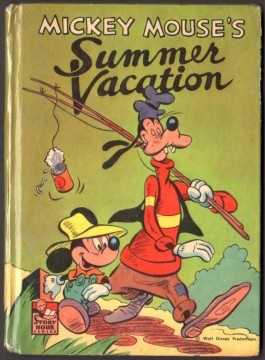
The front cover
